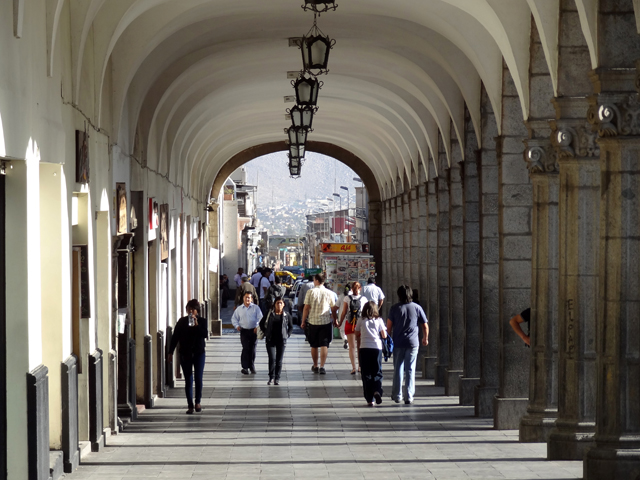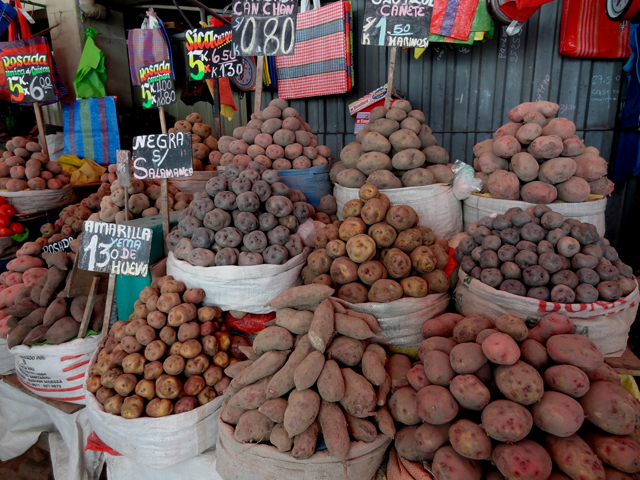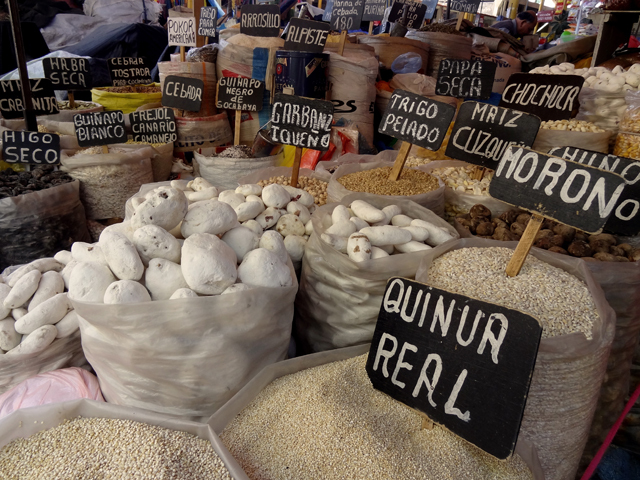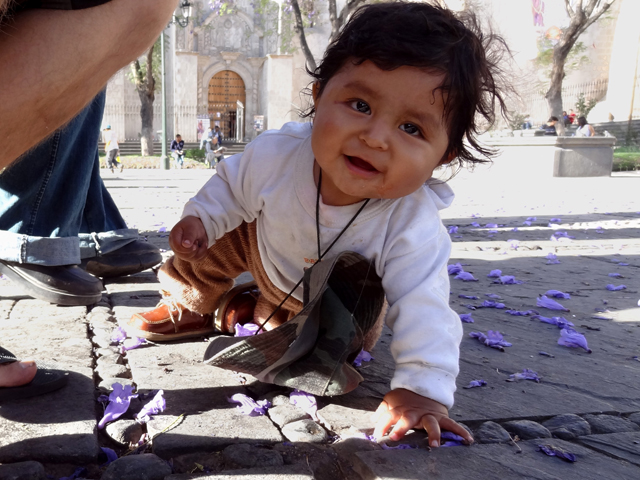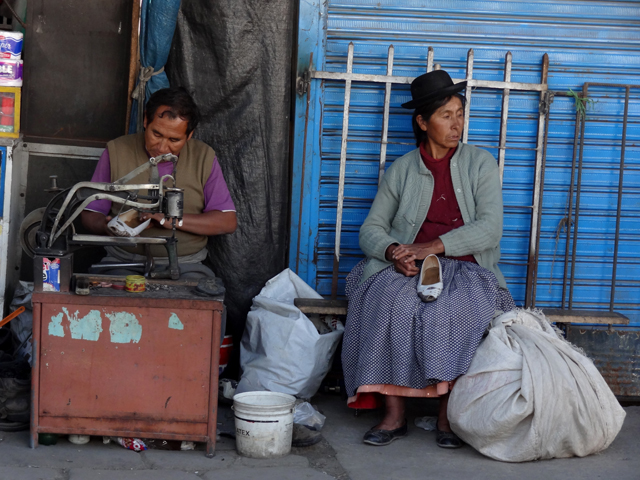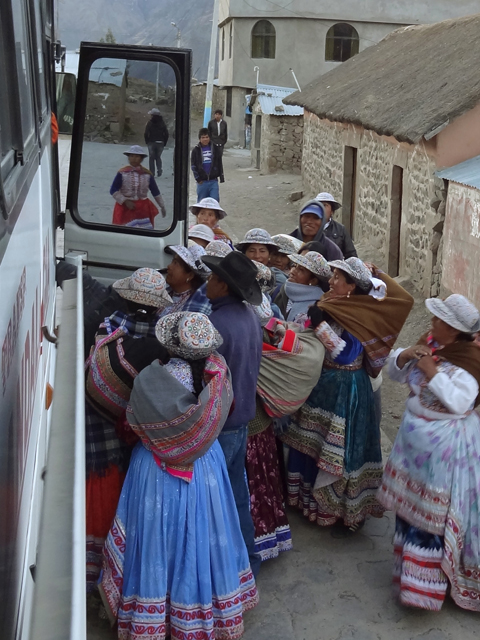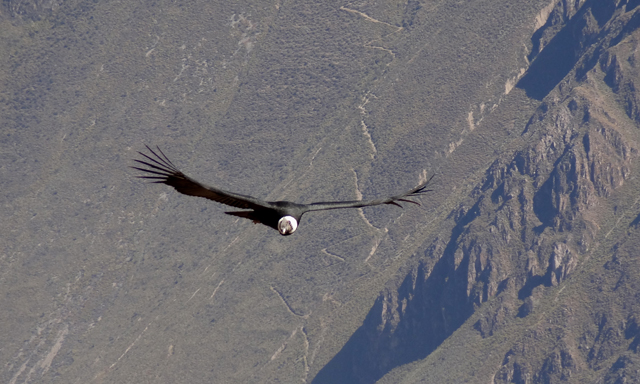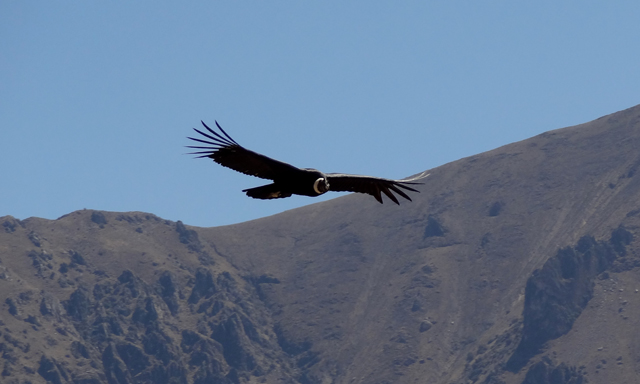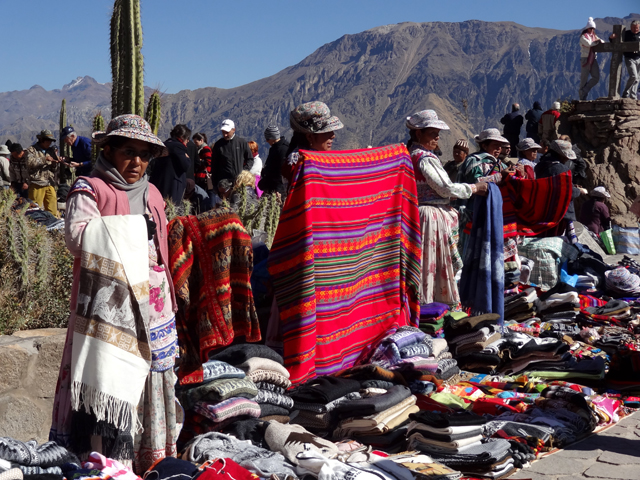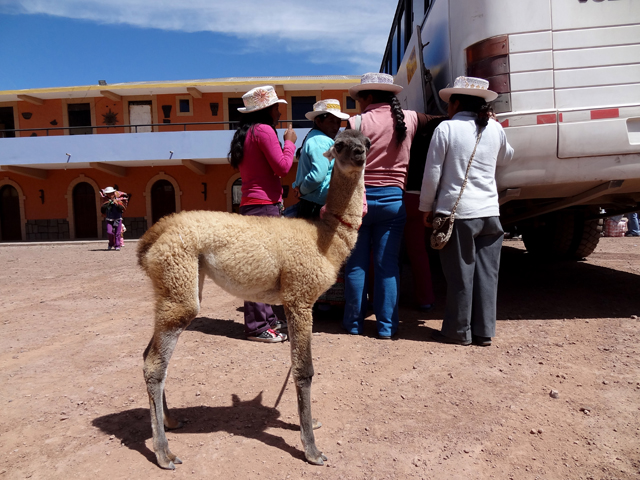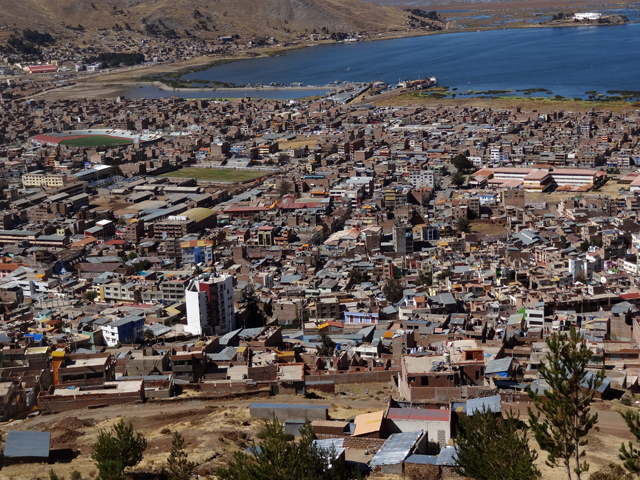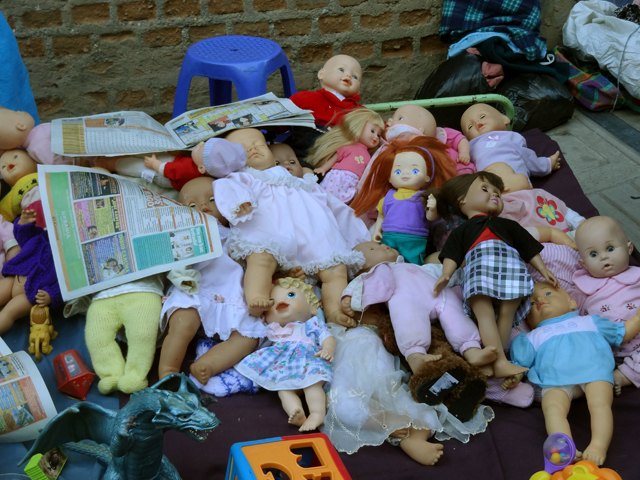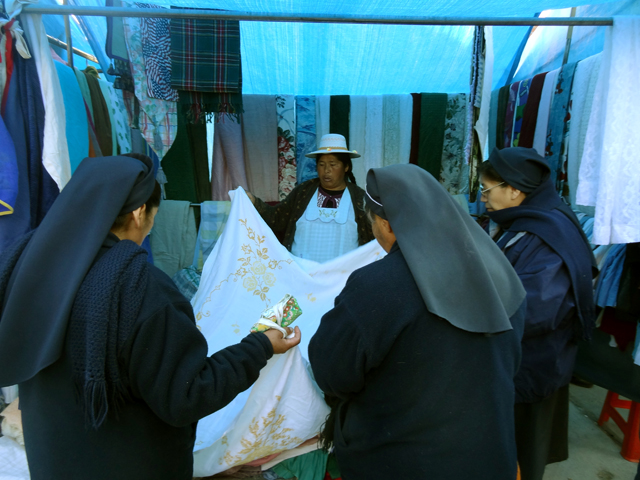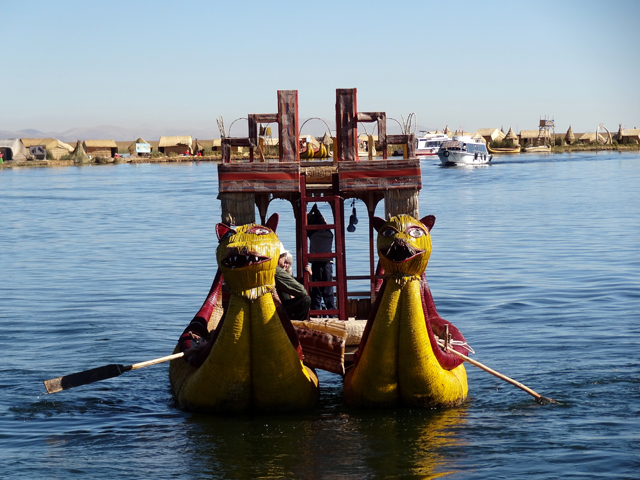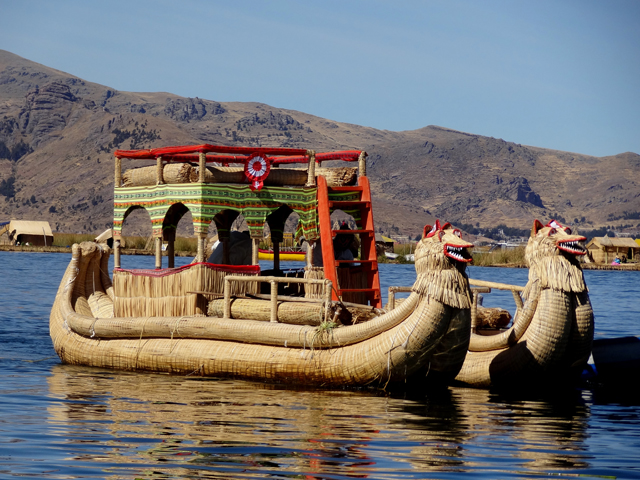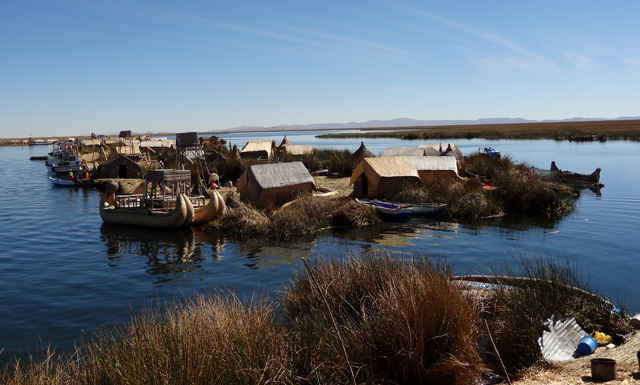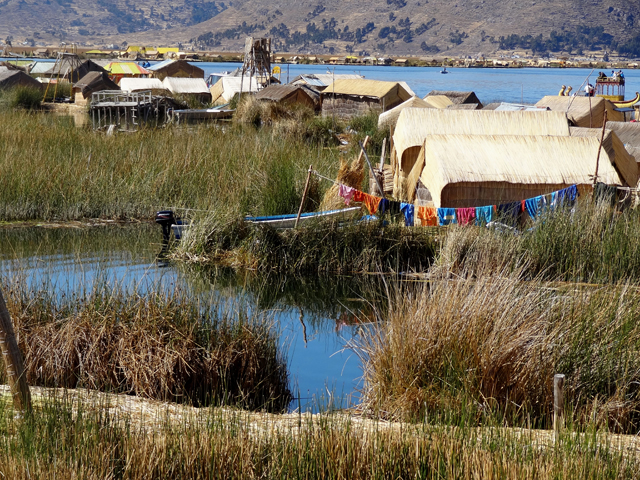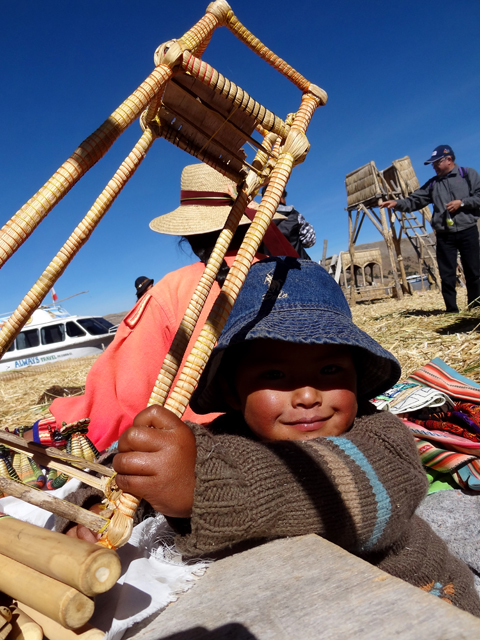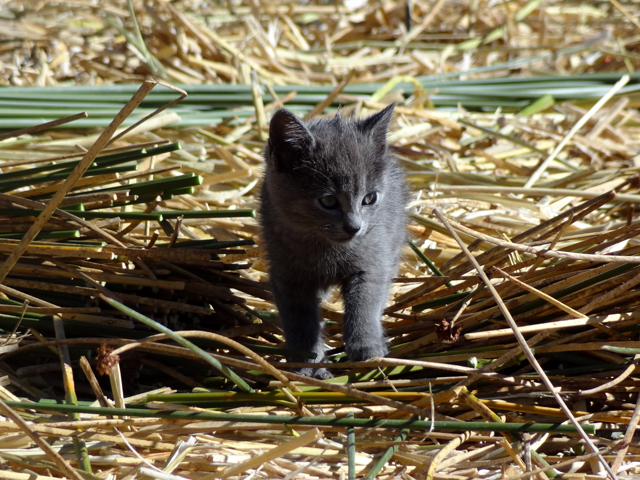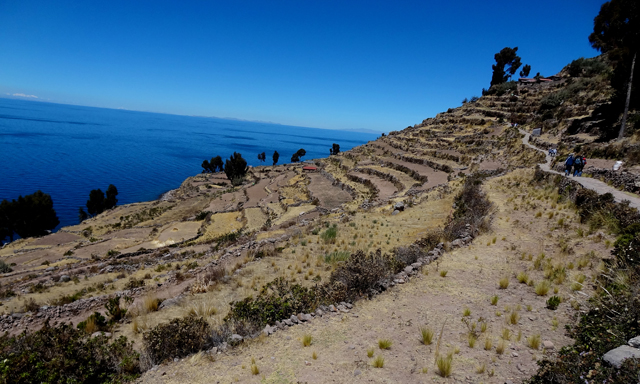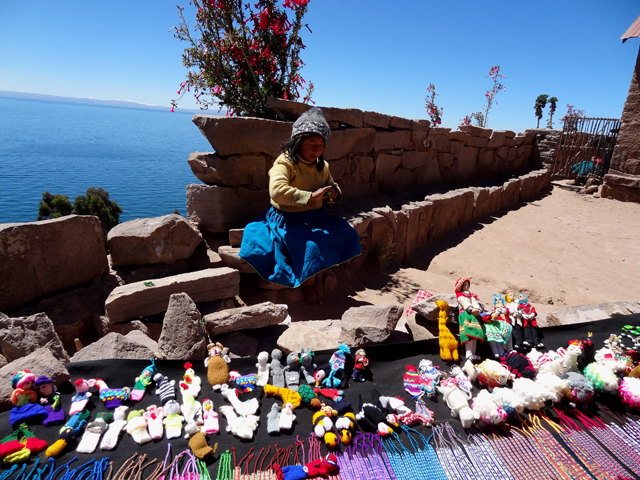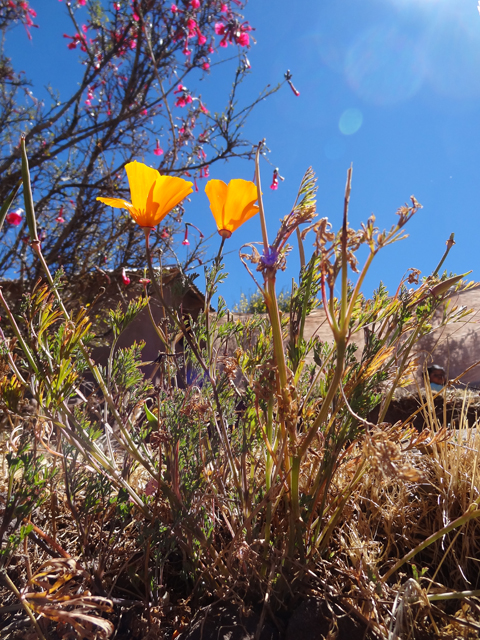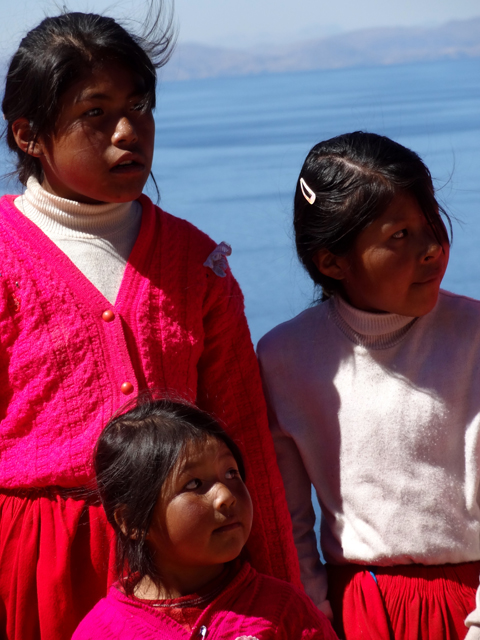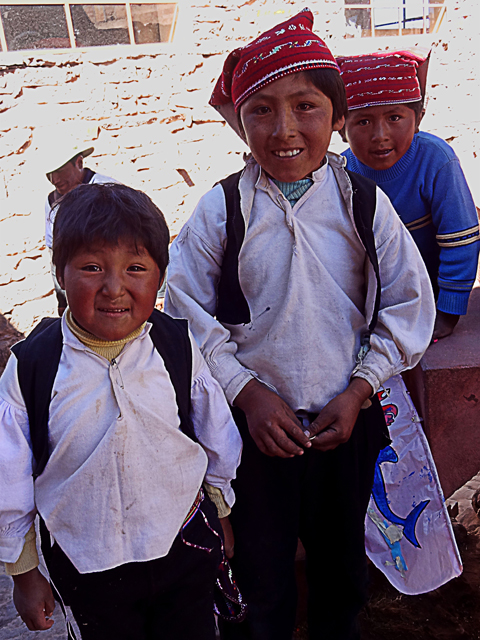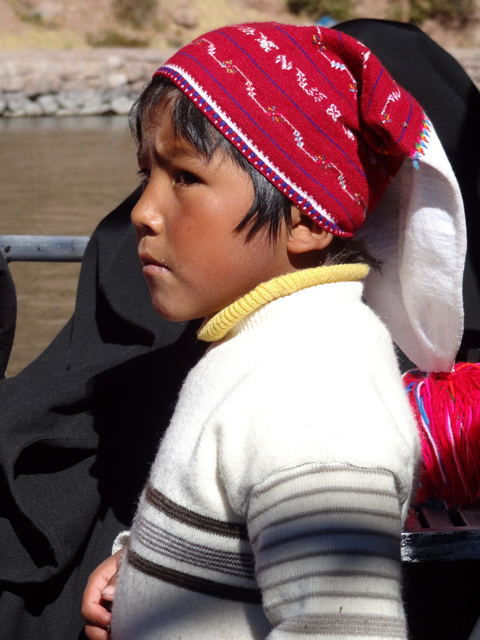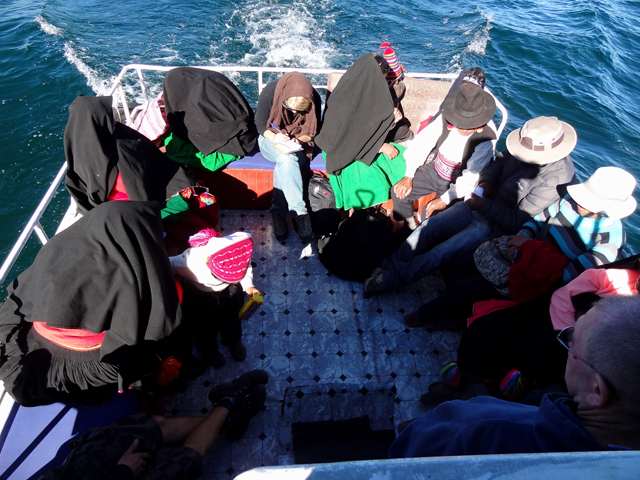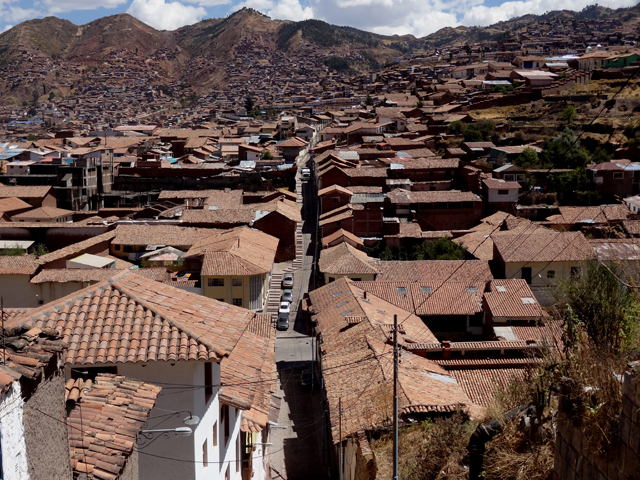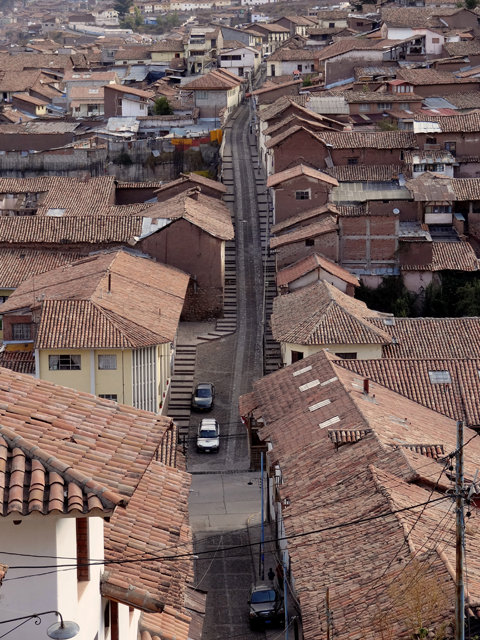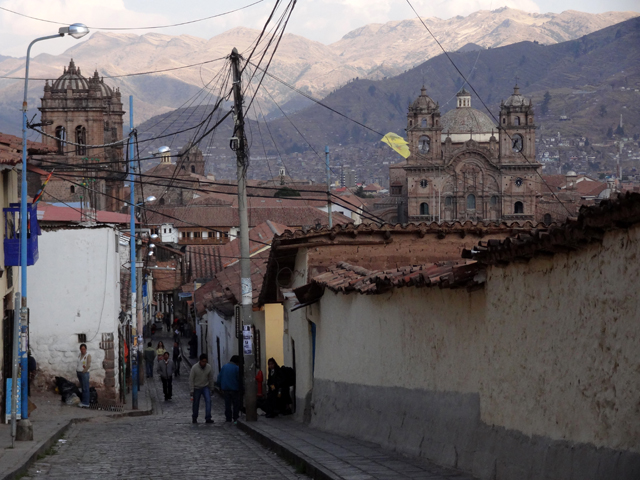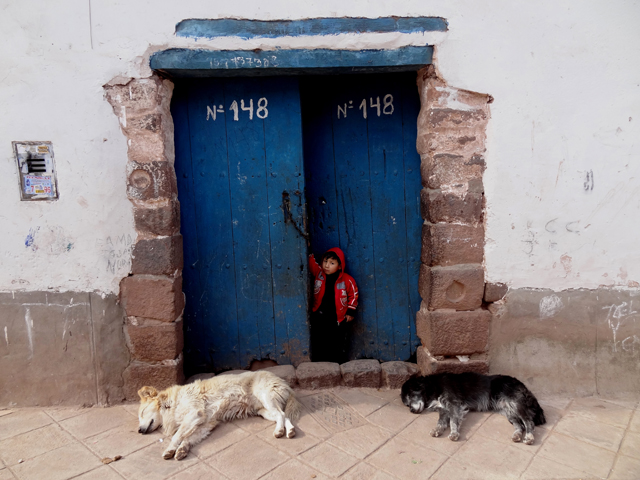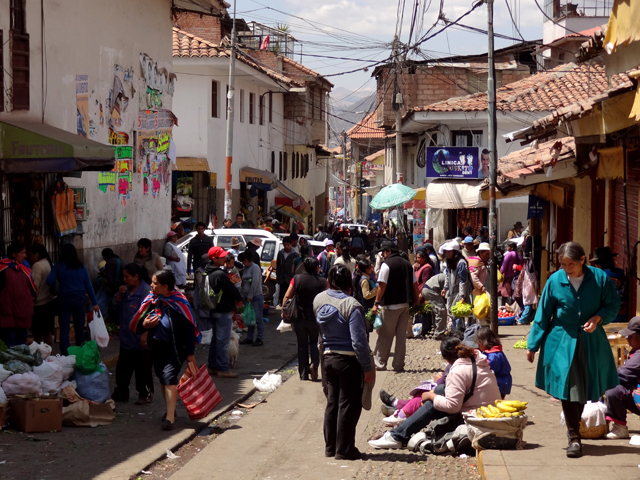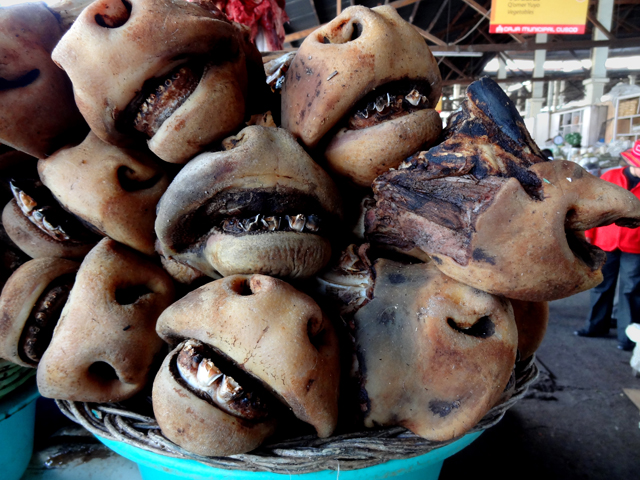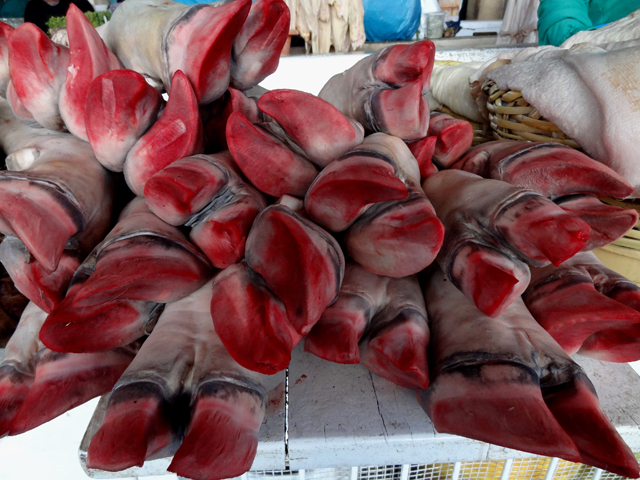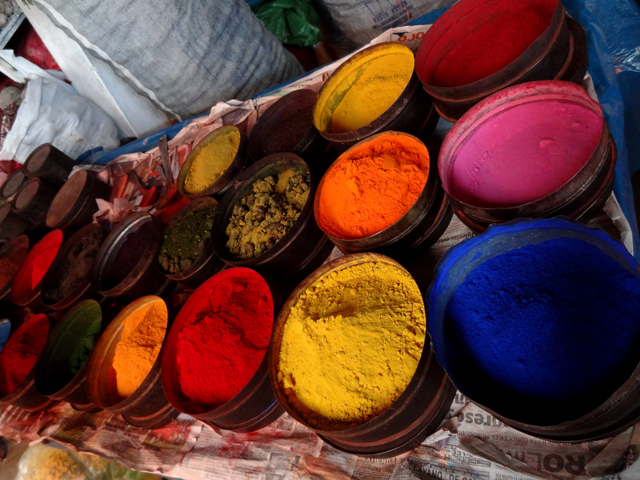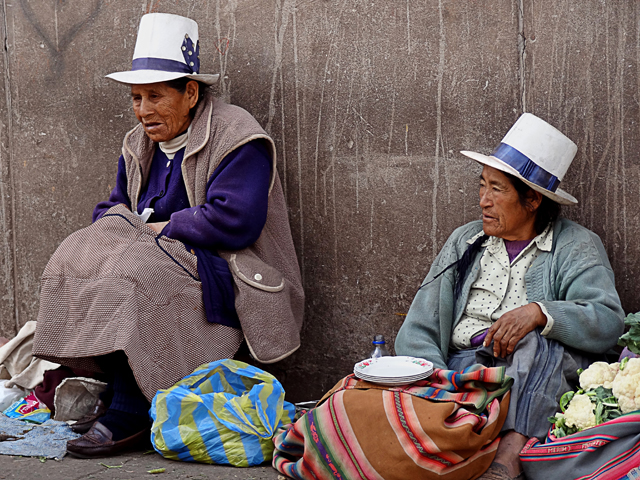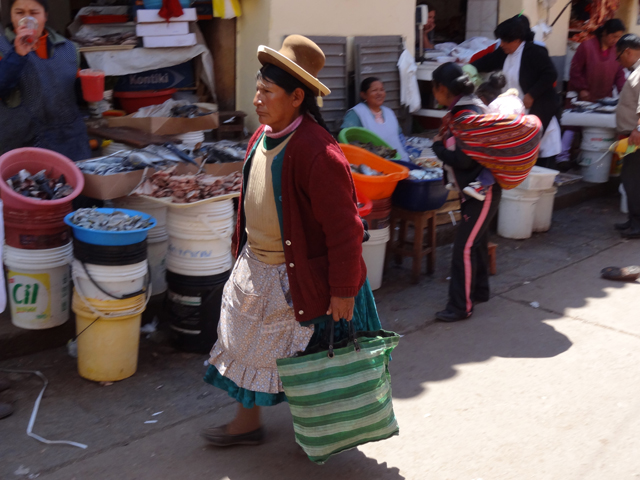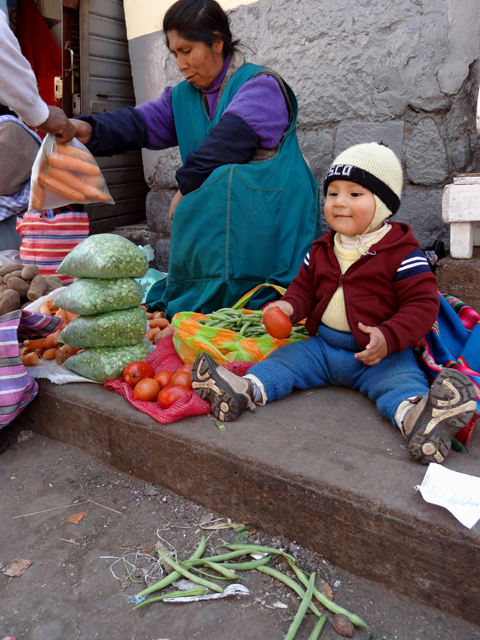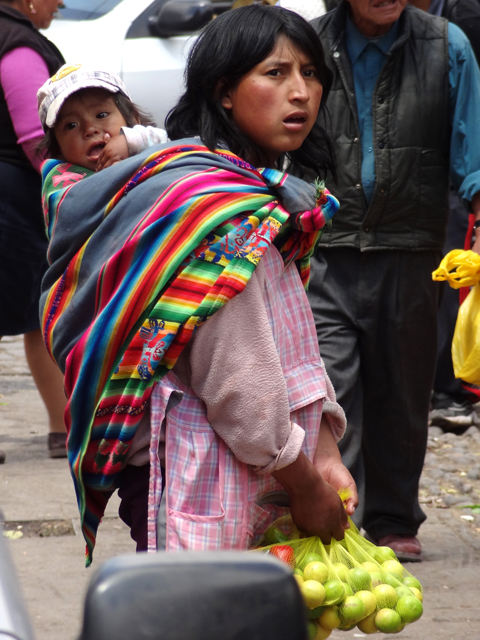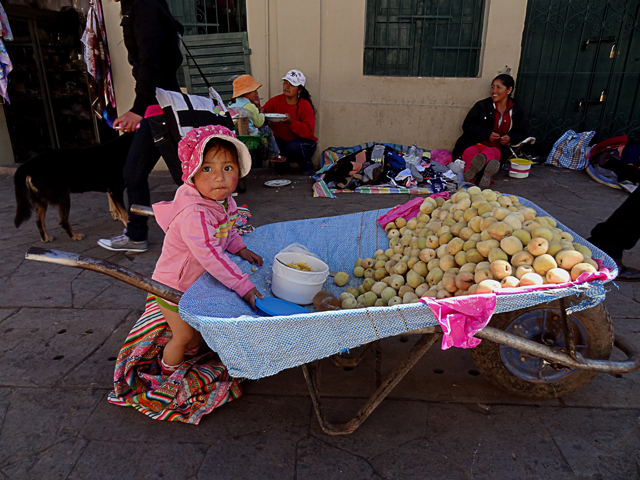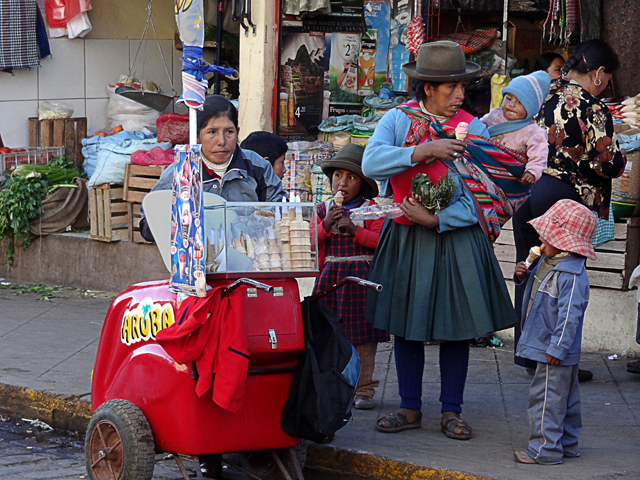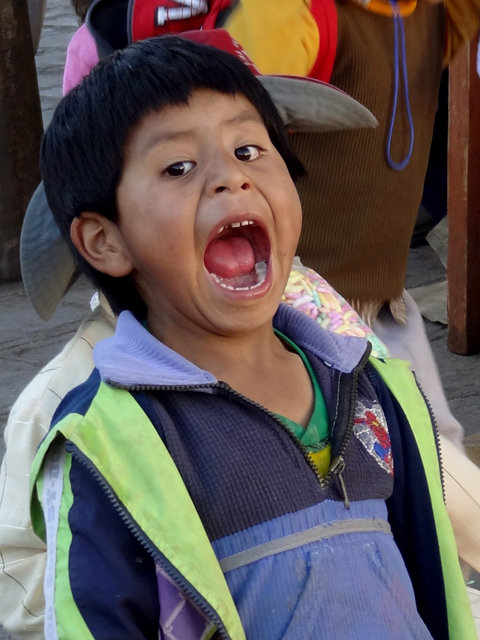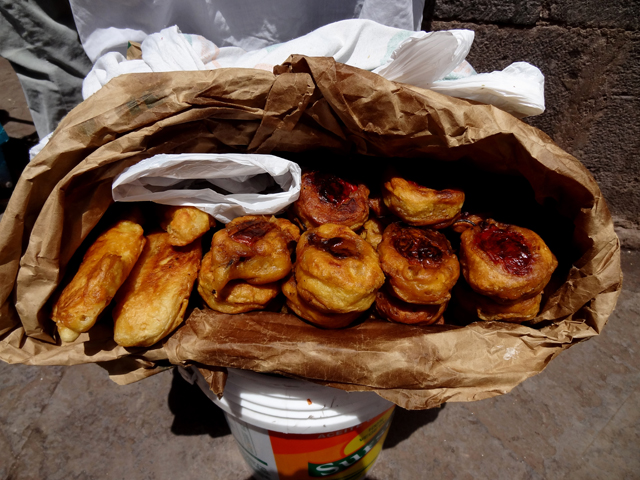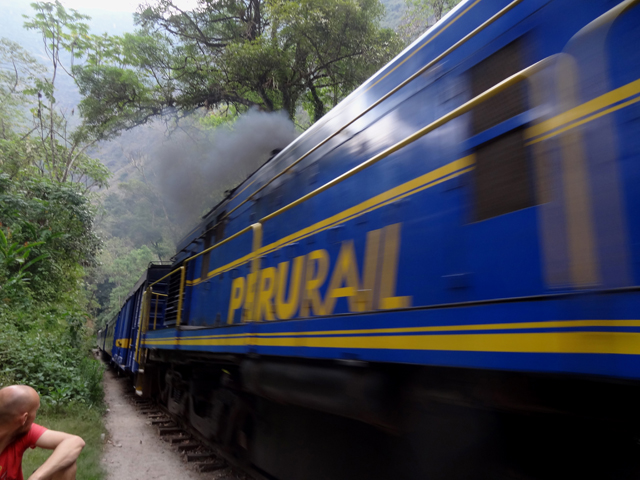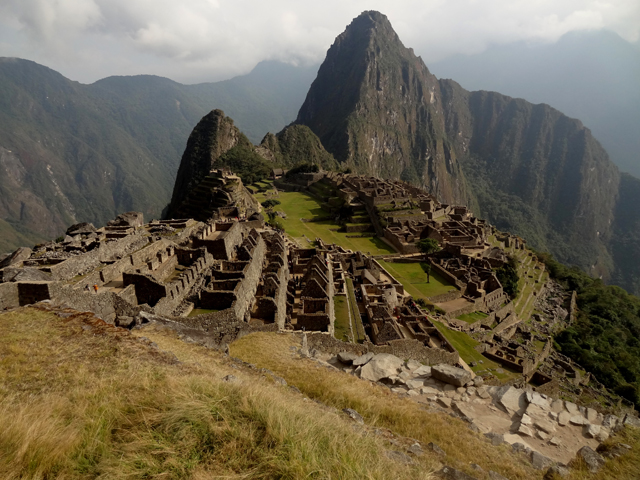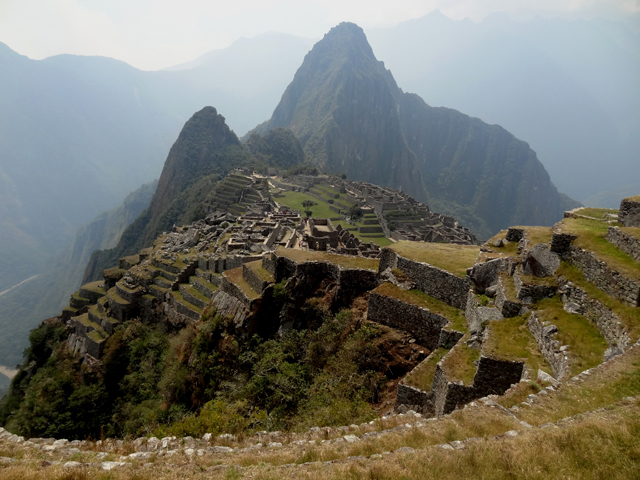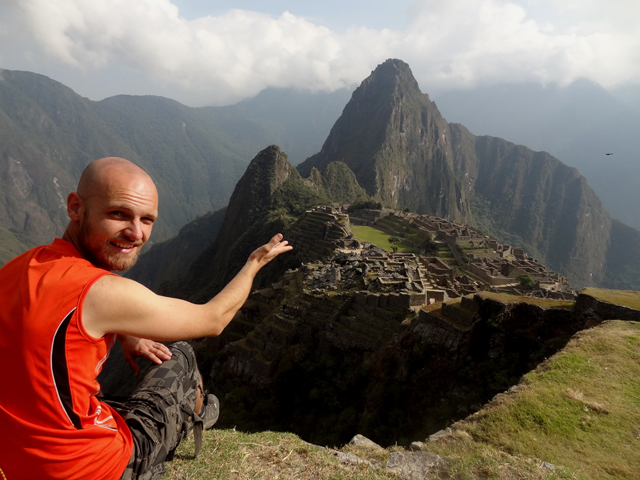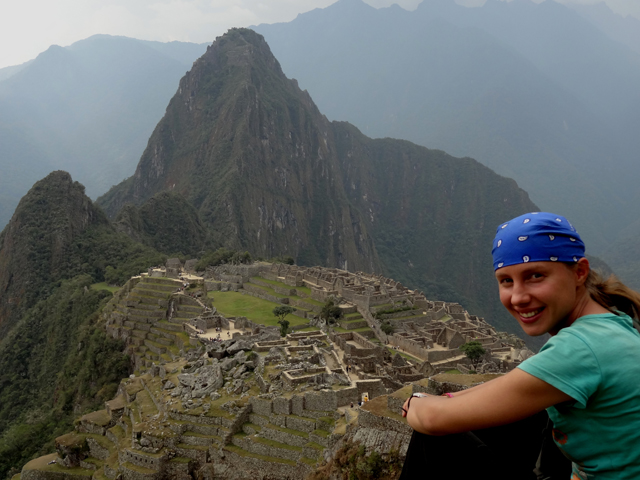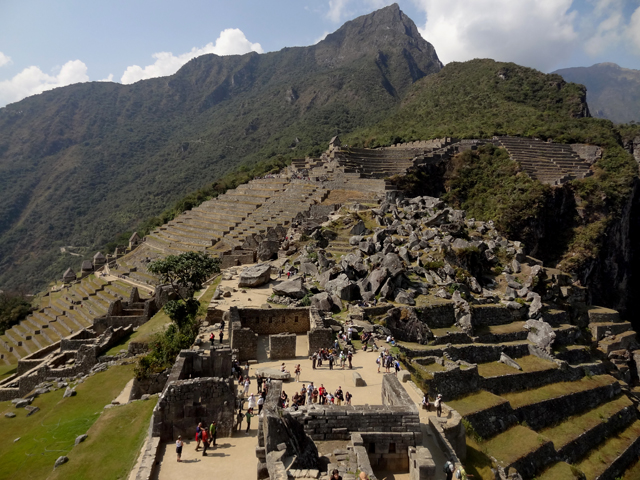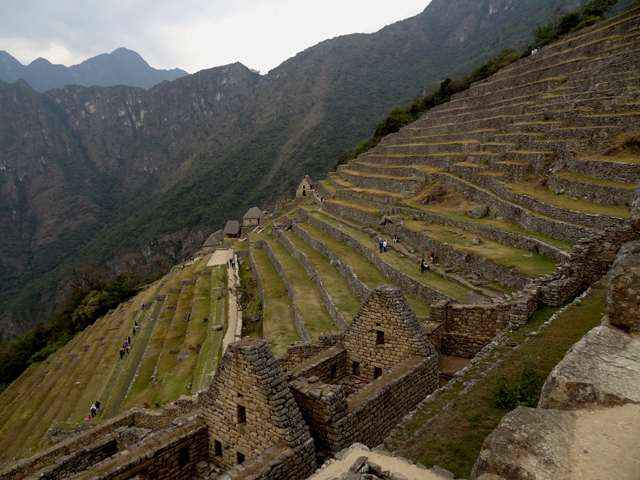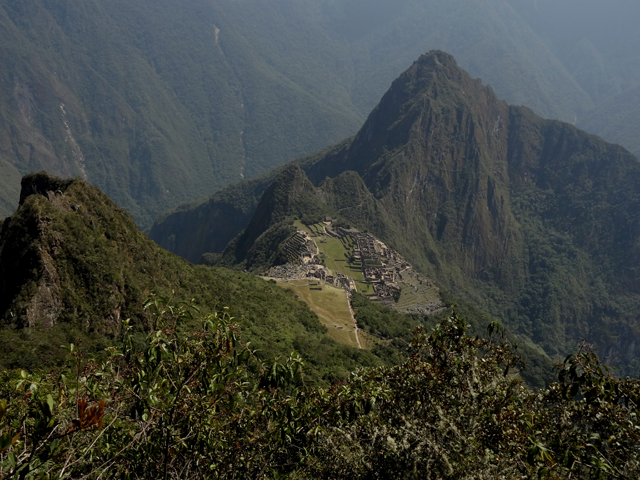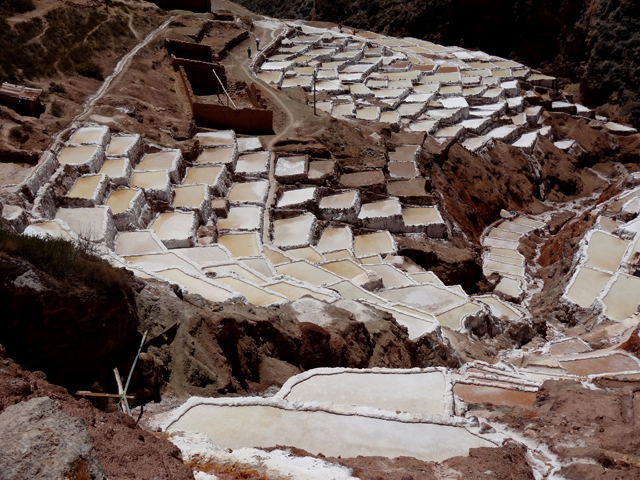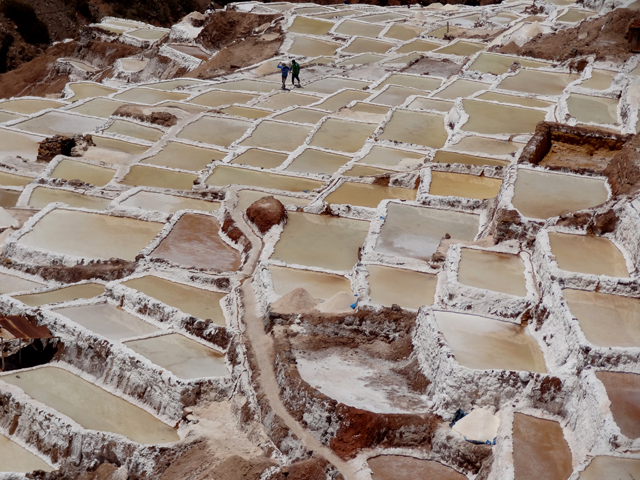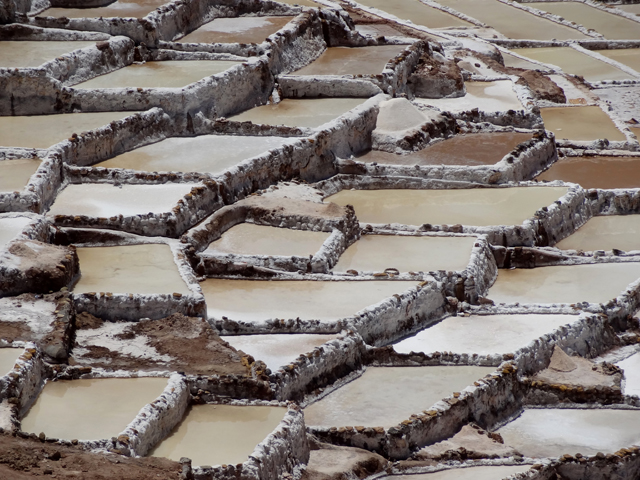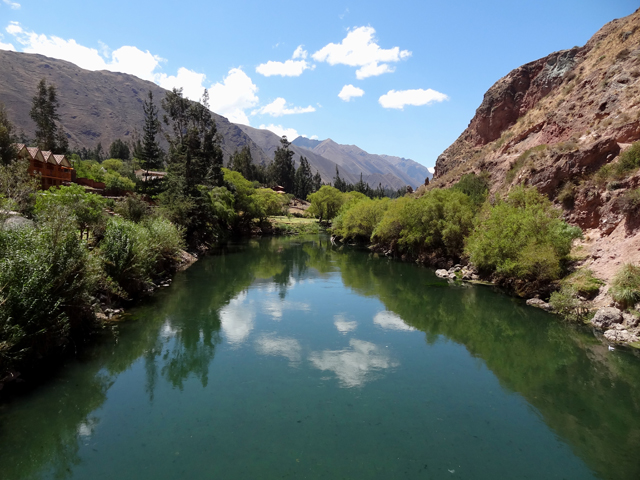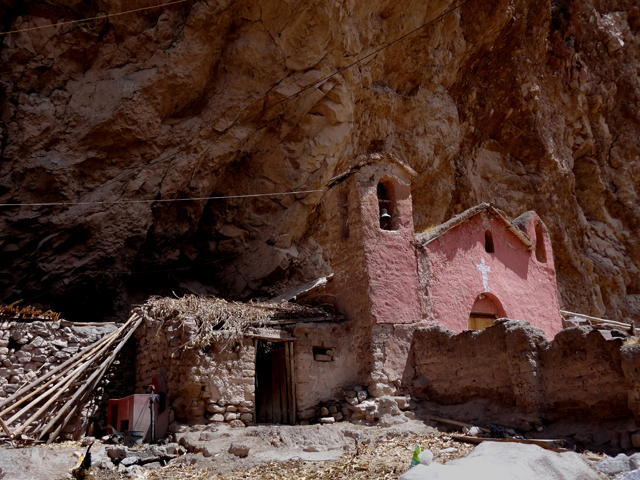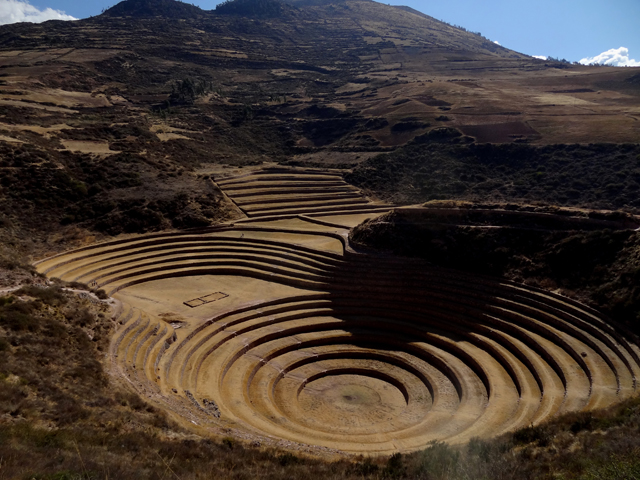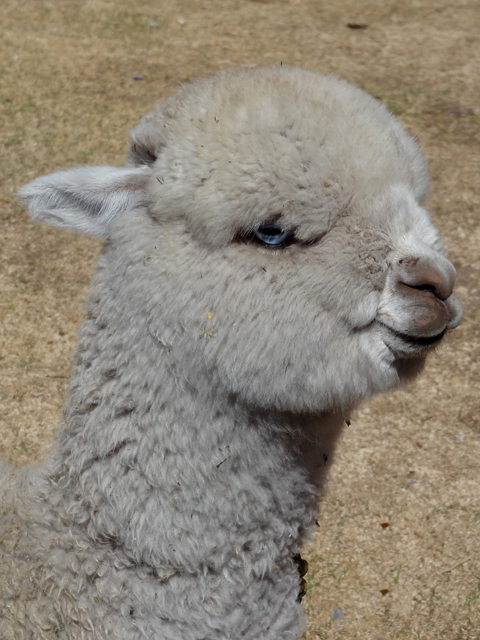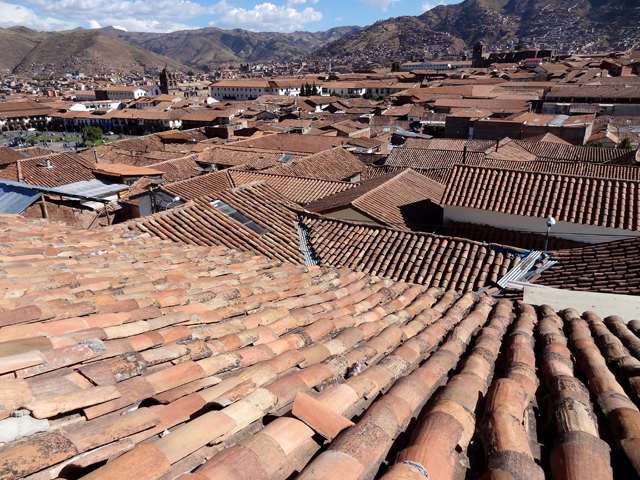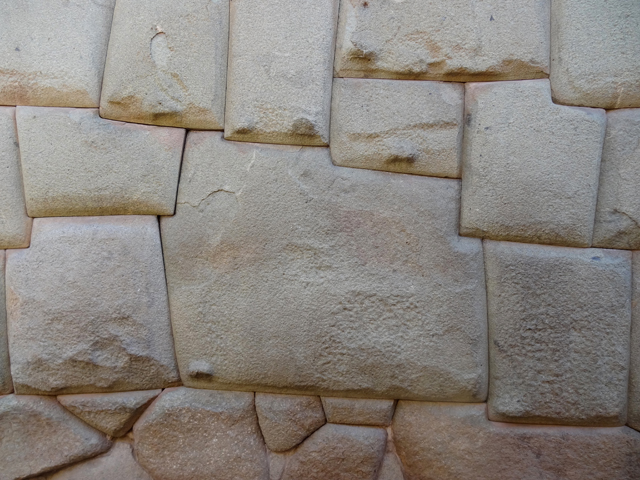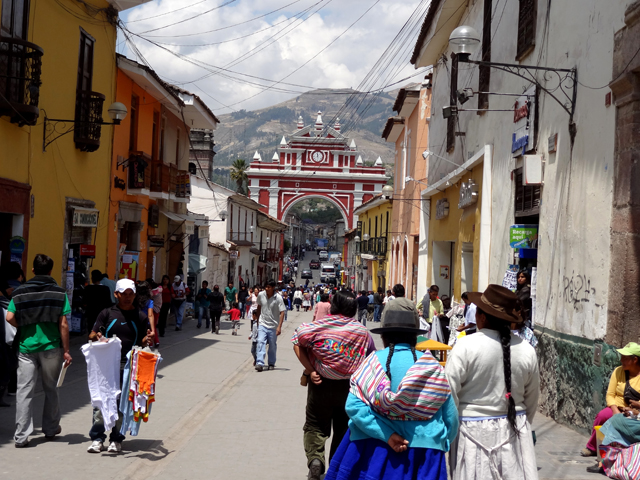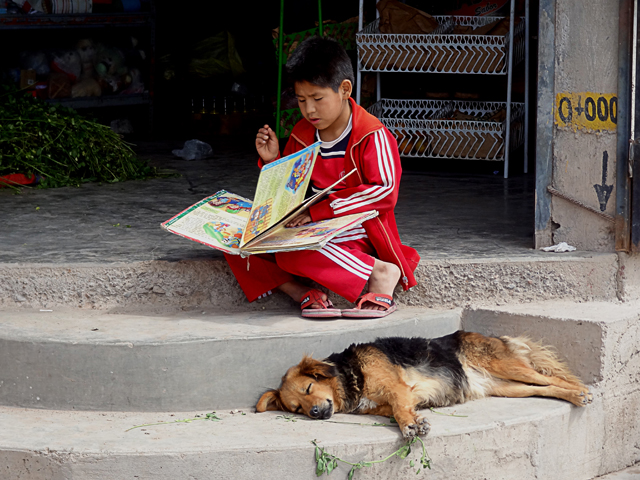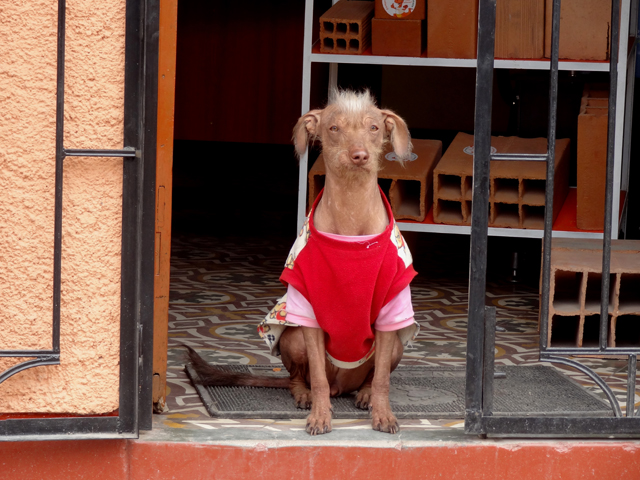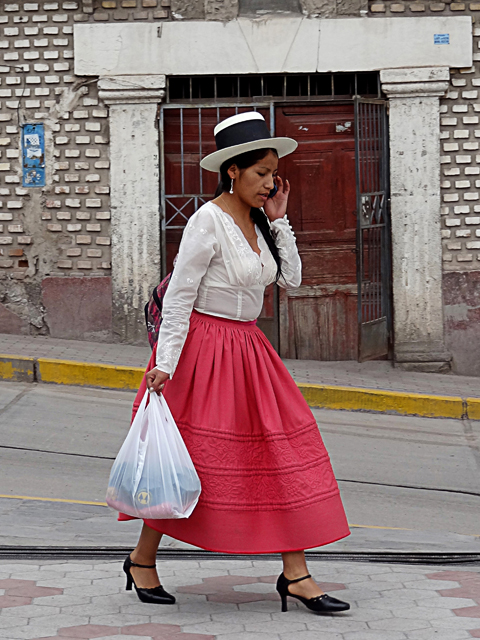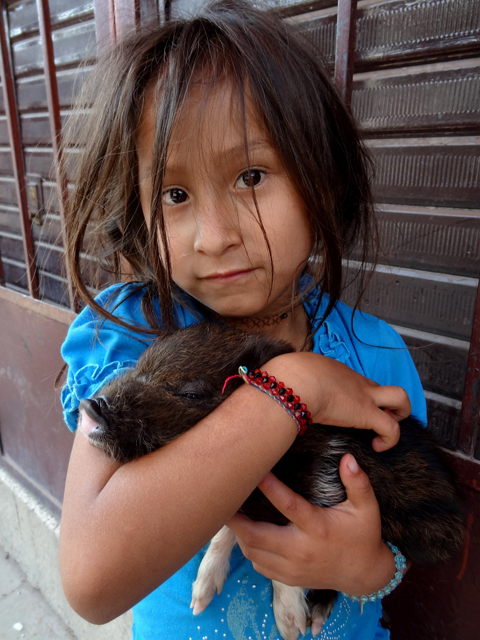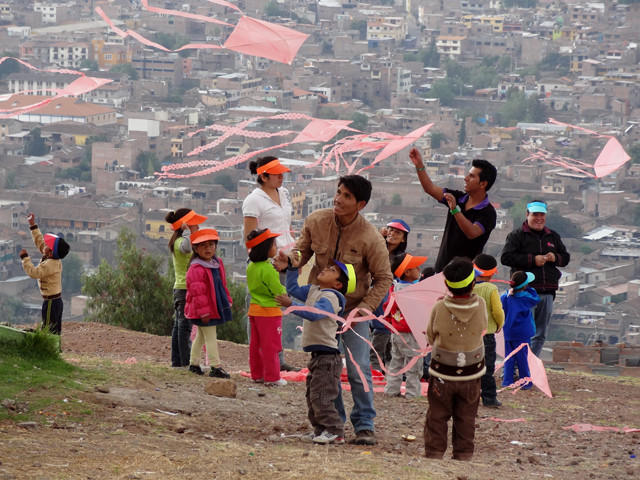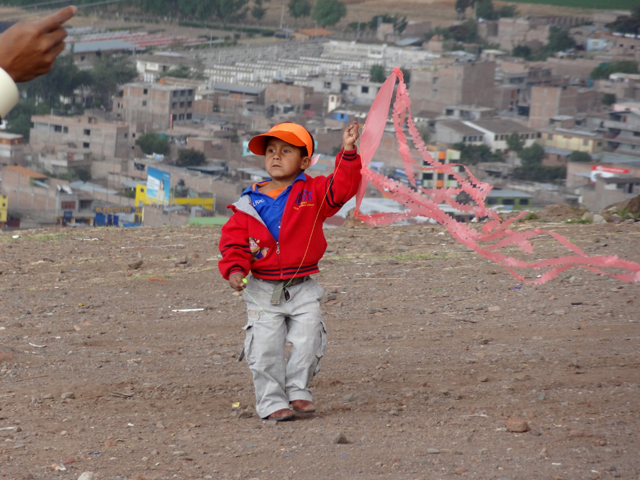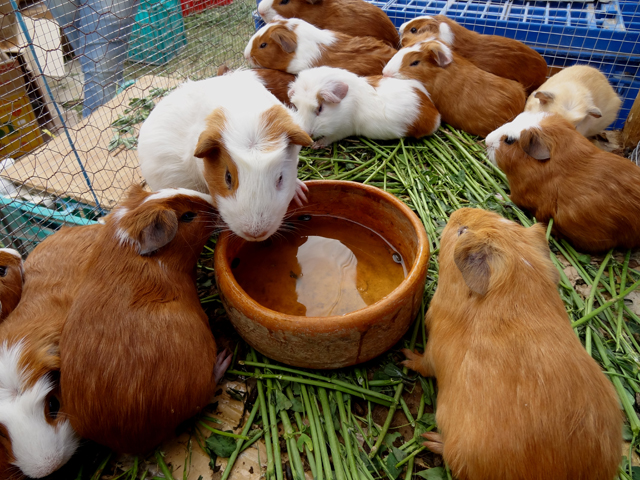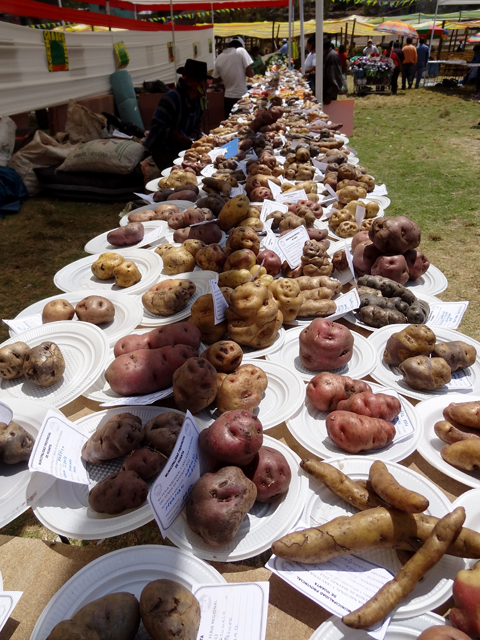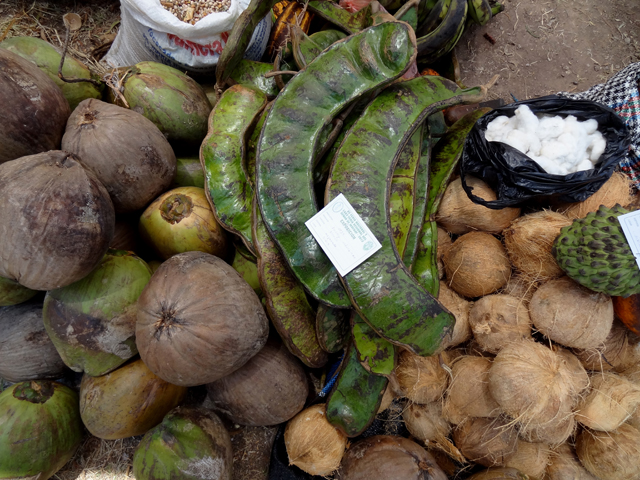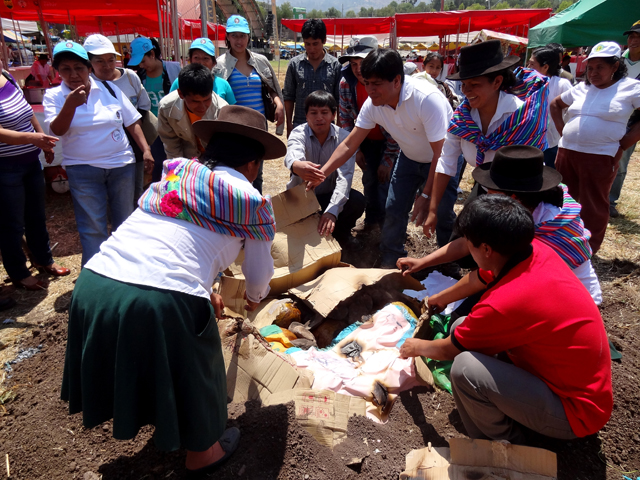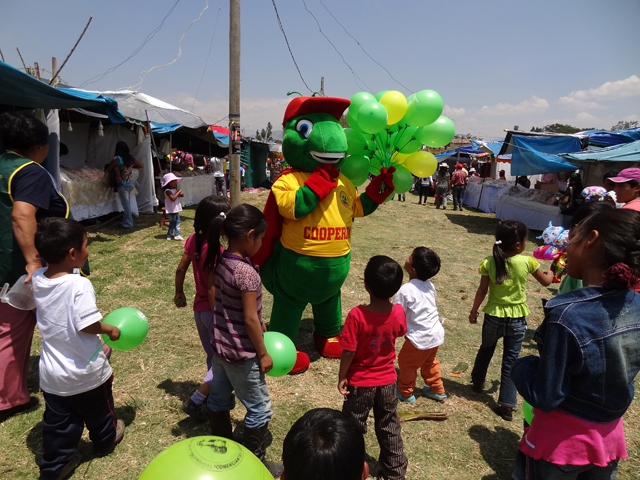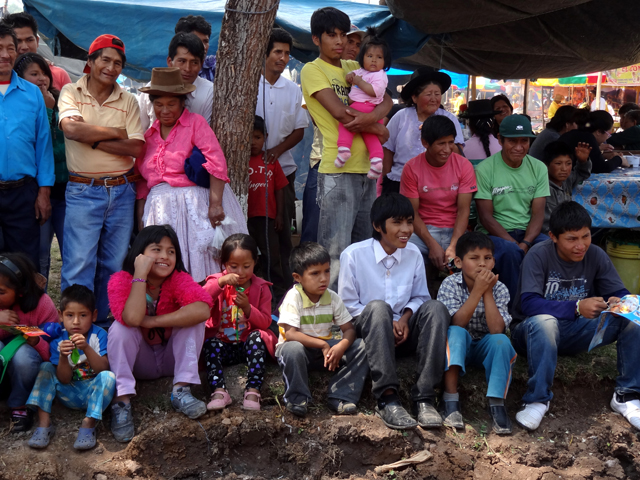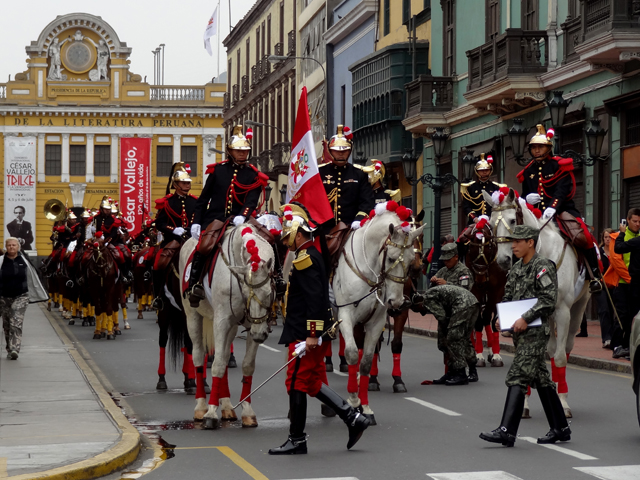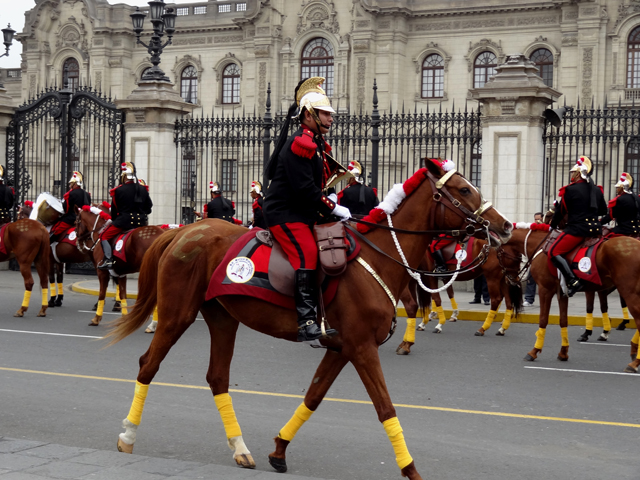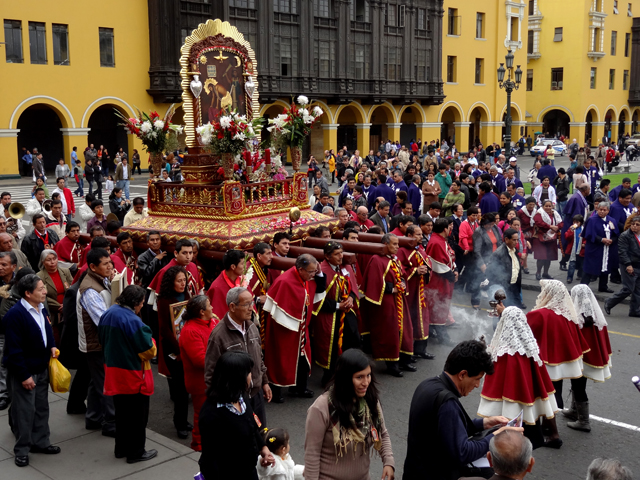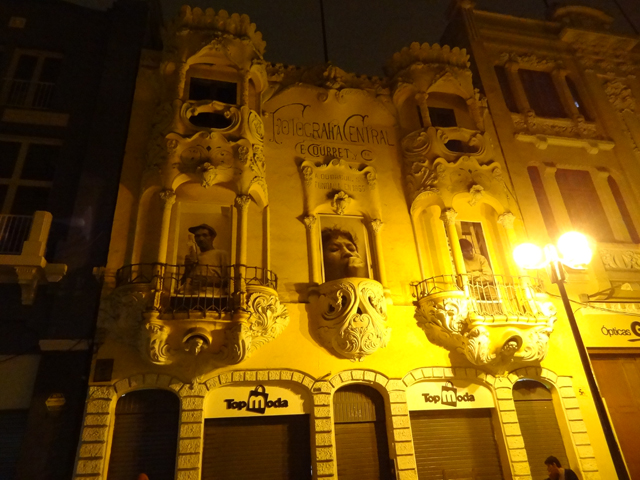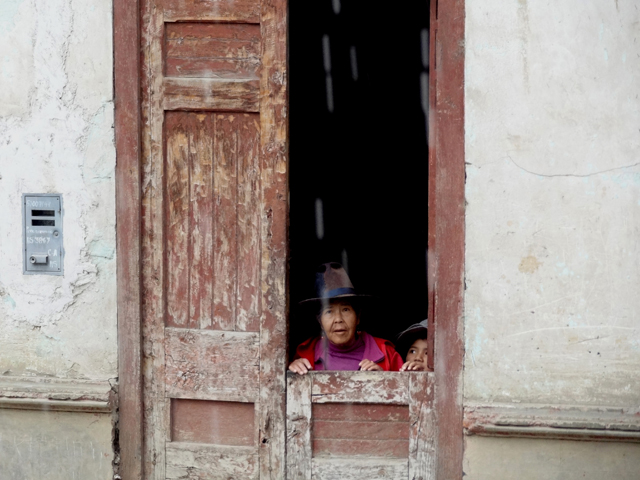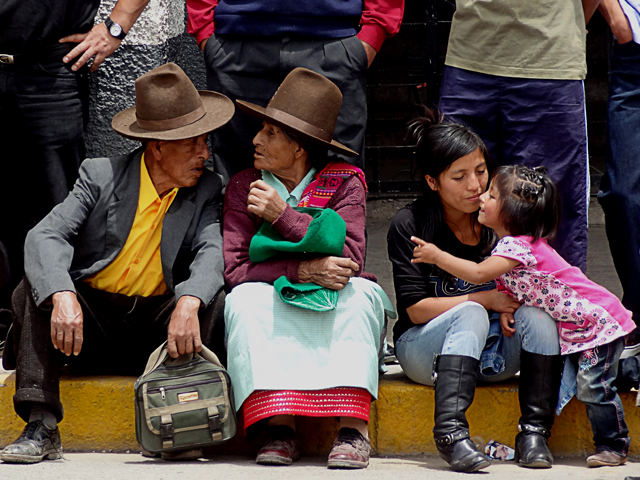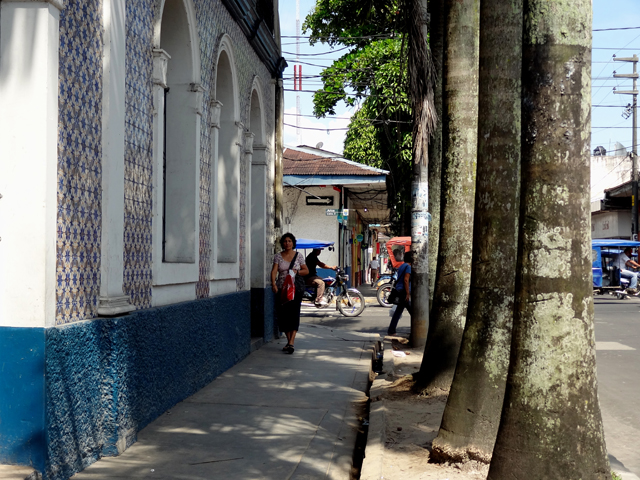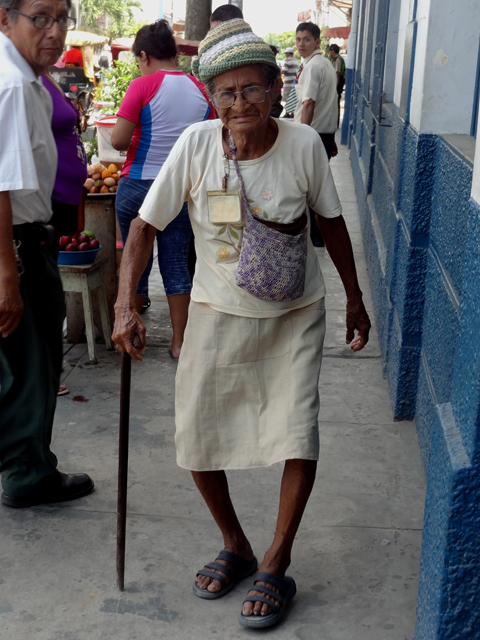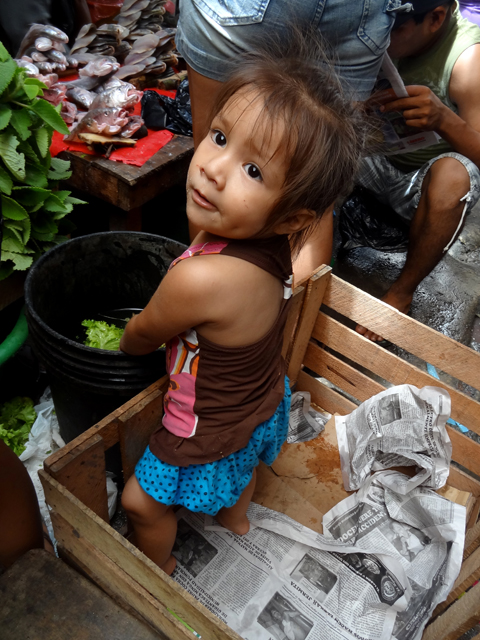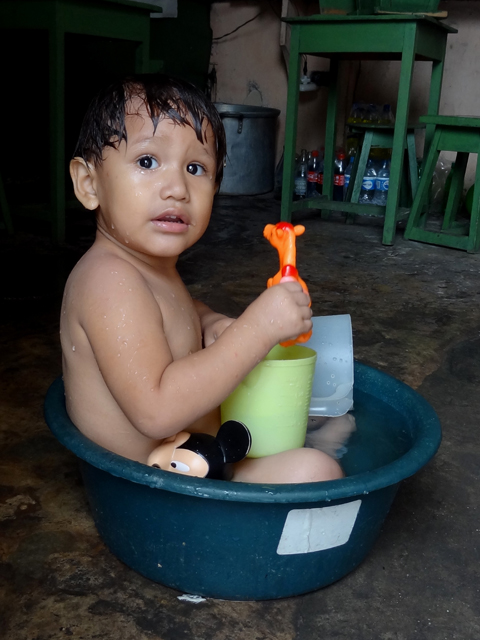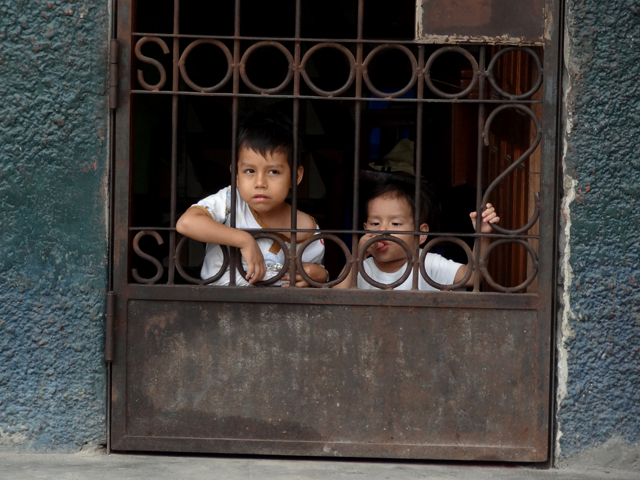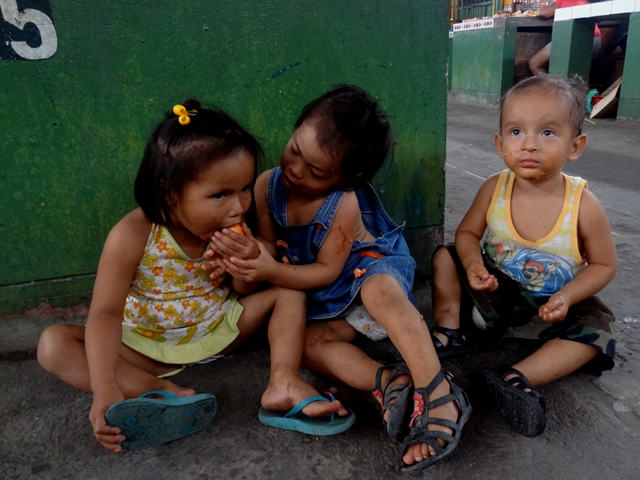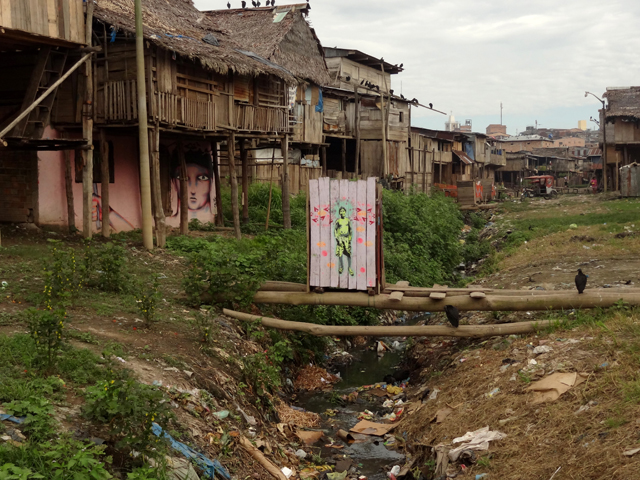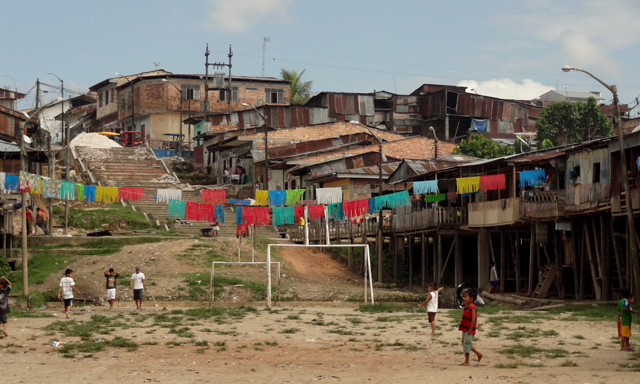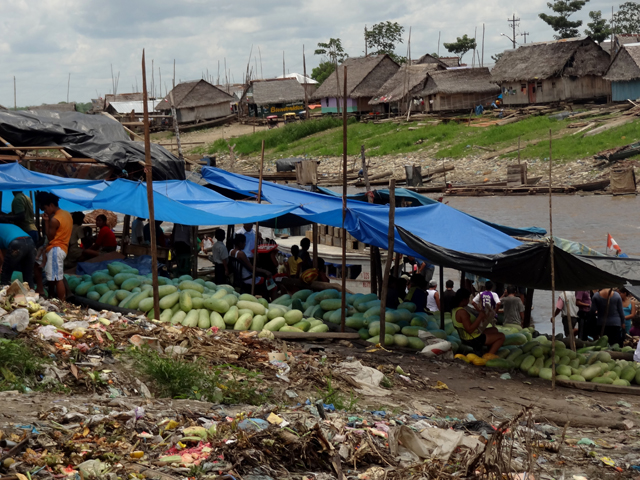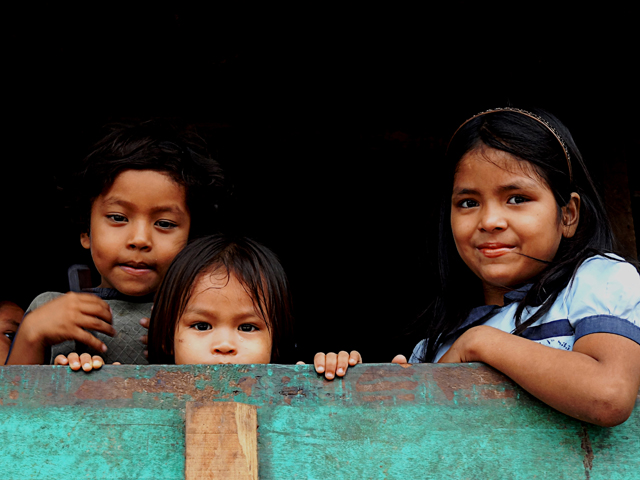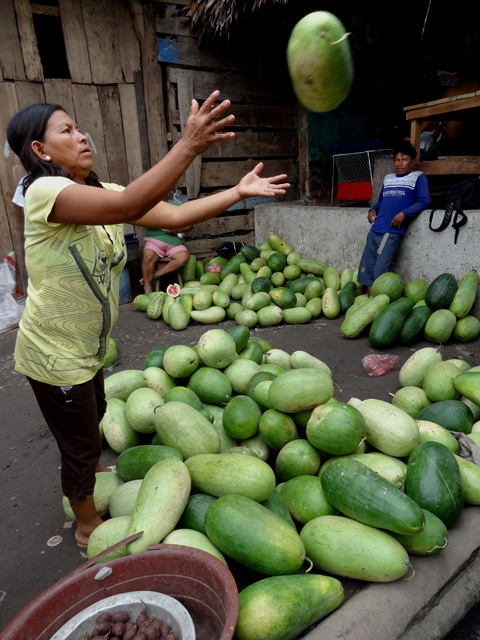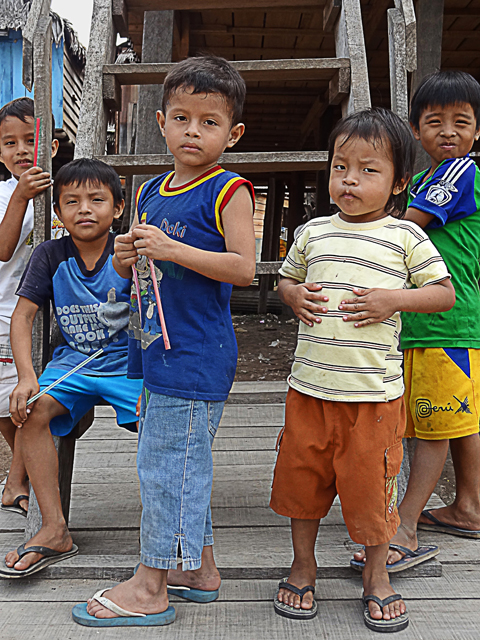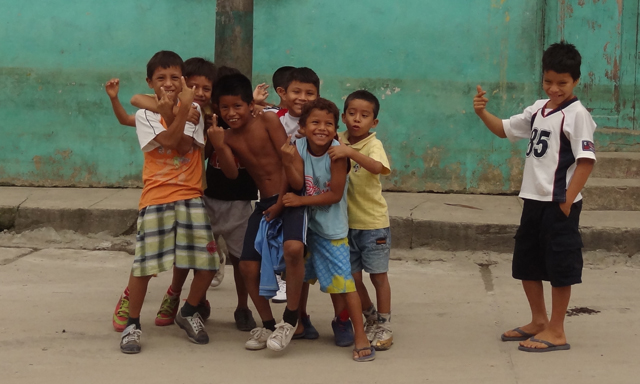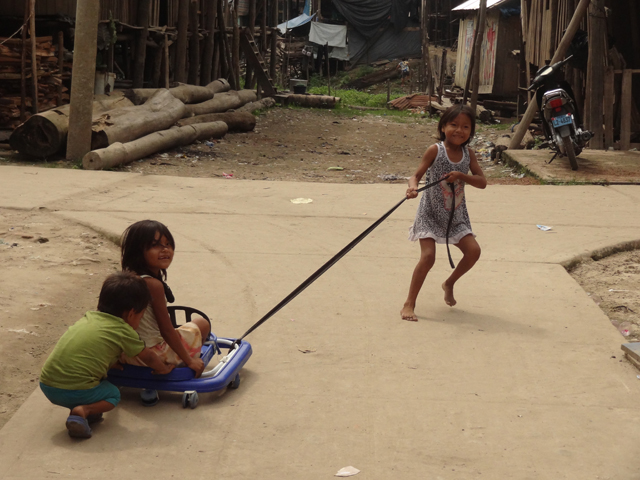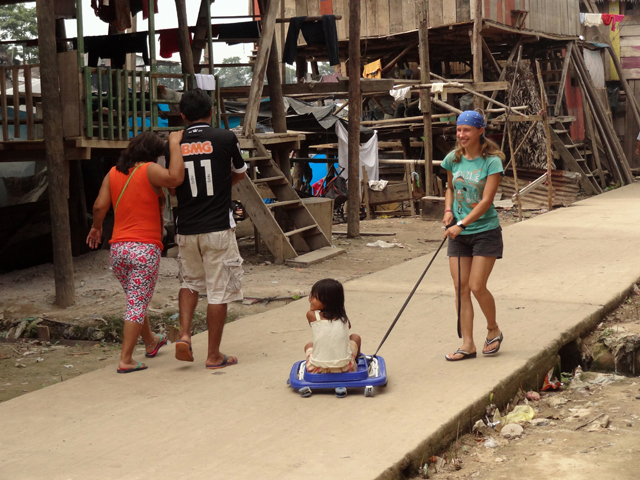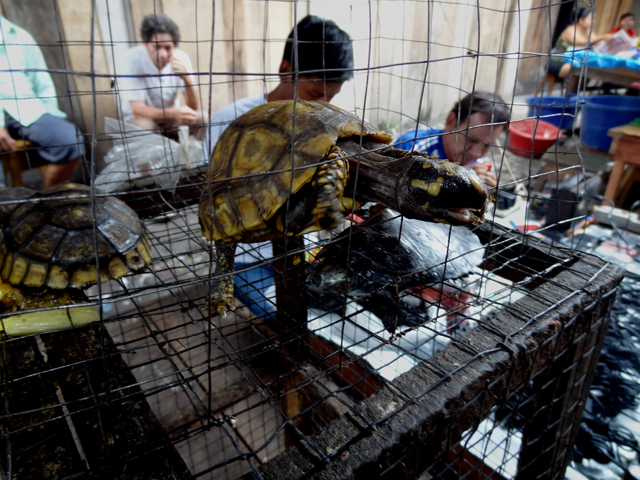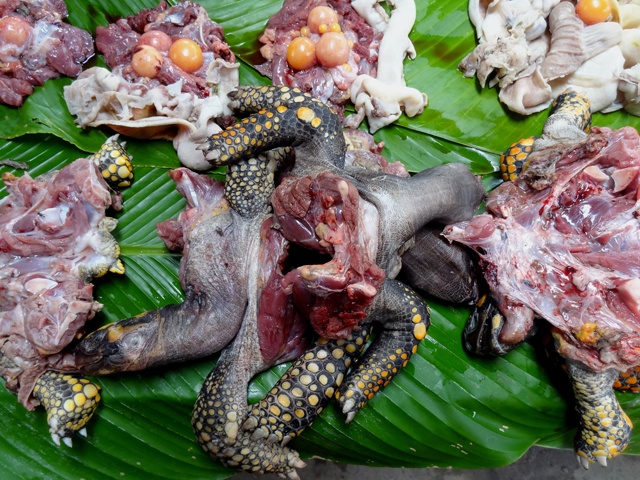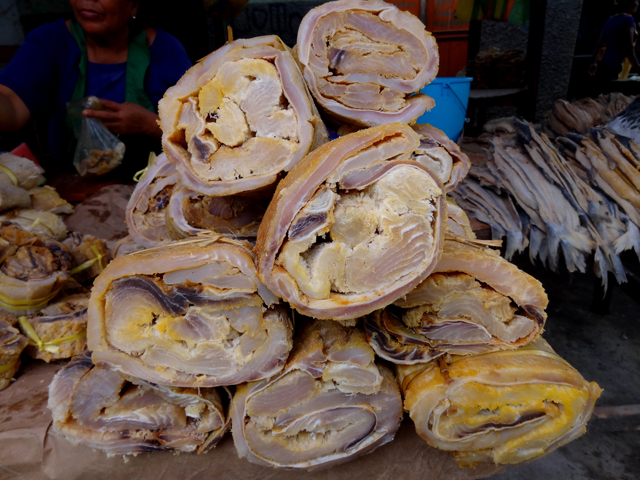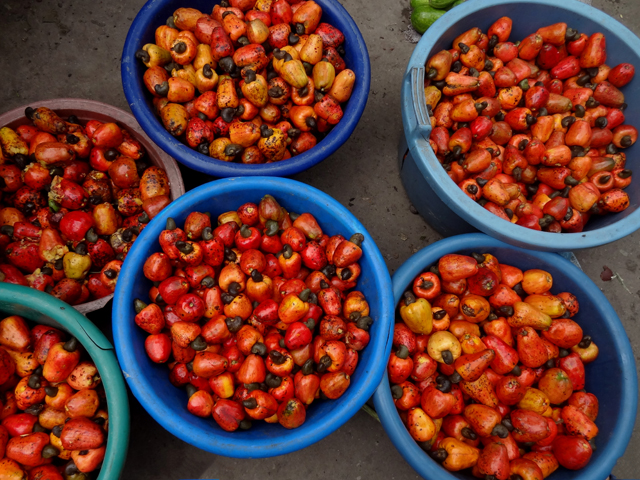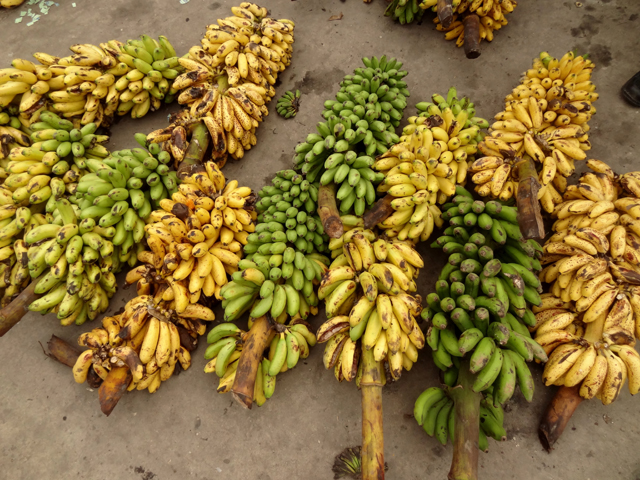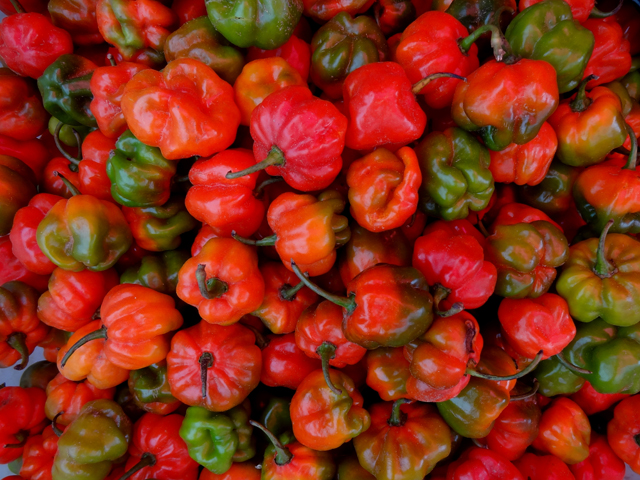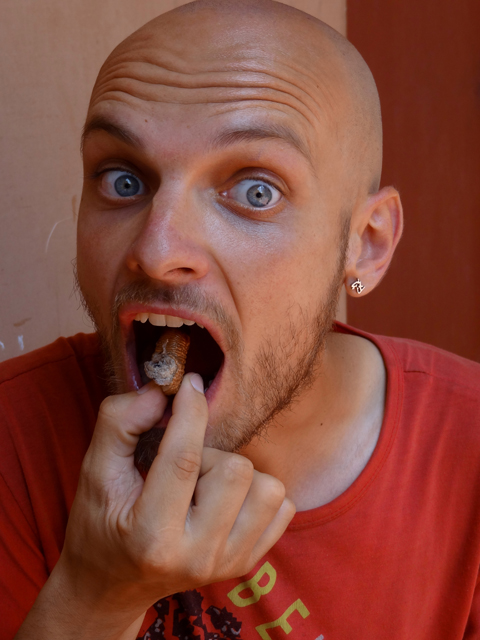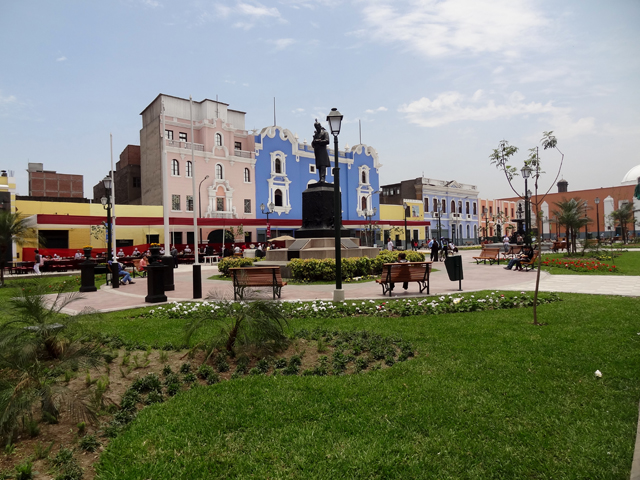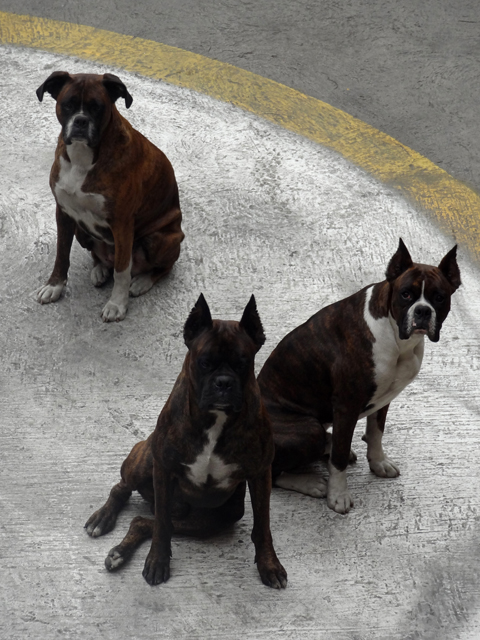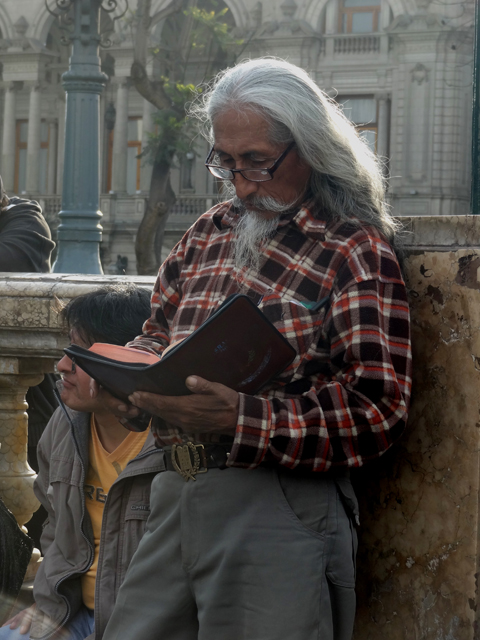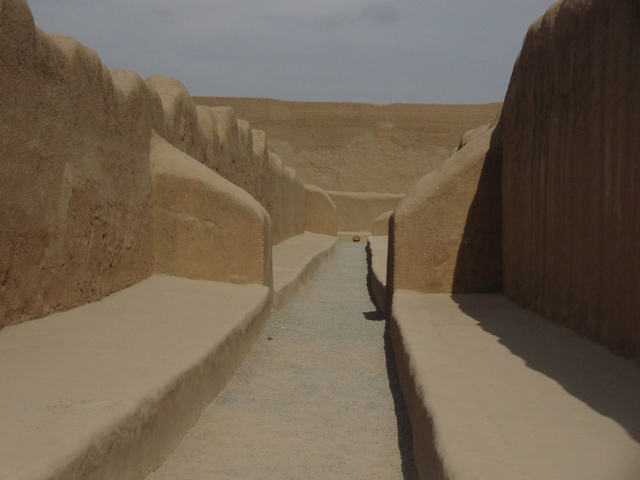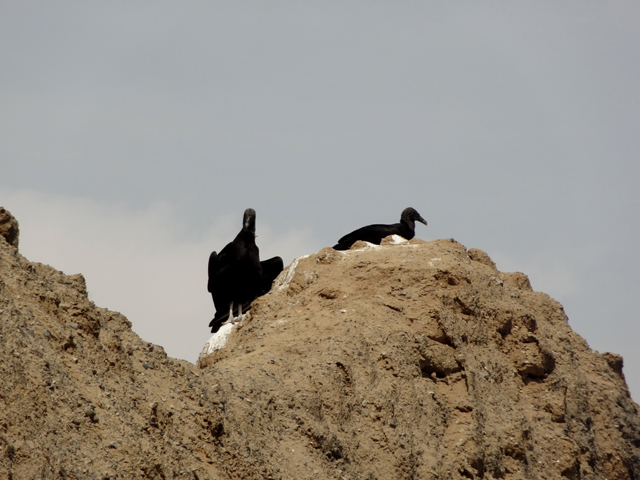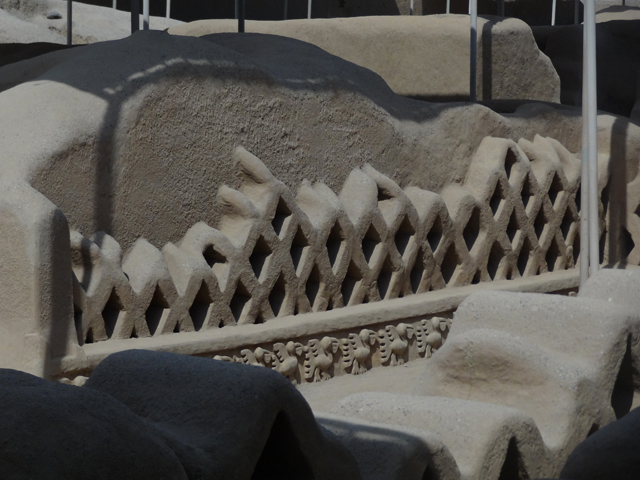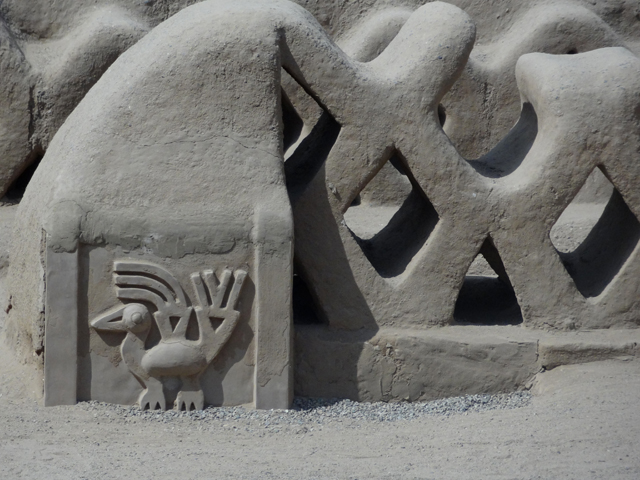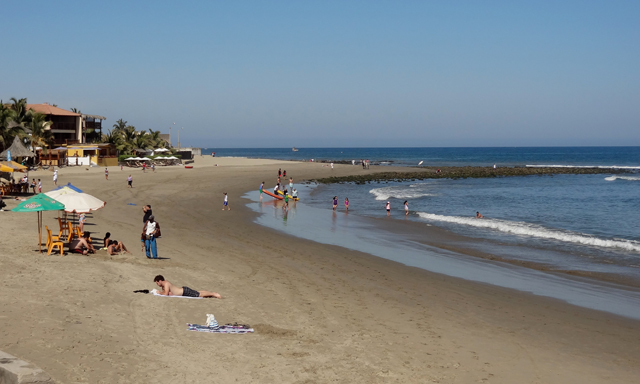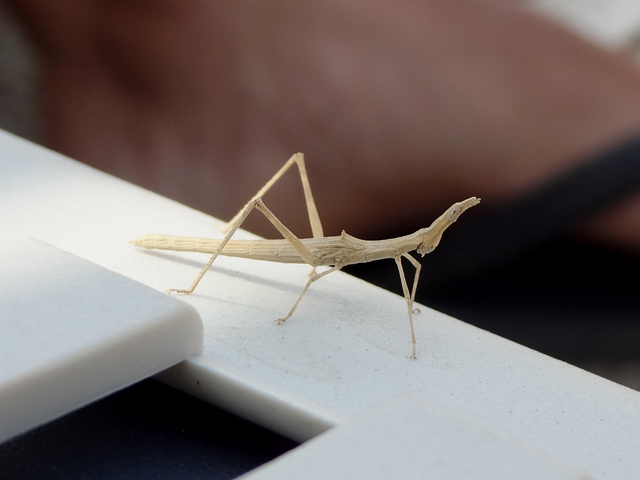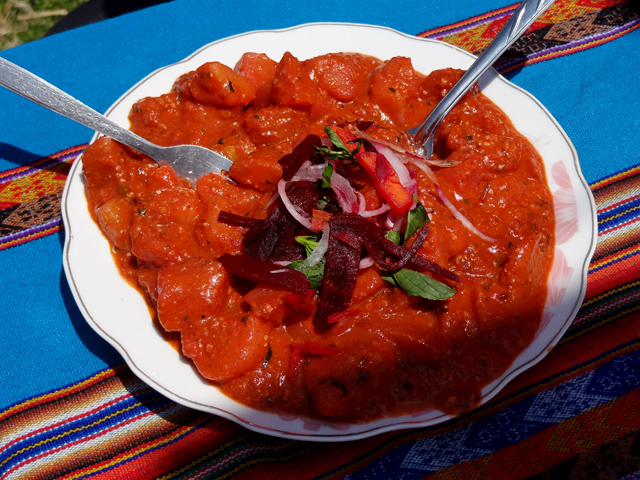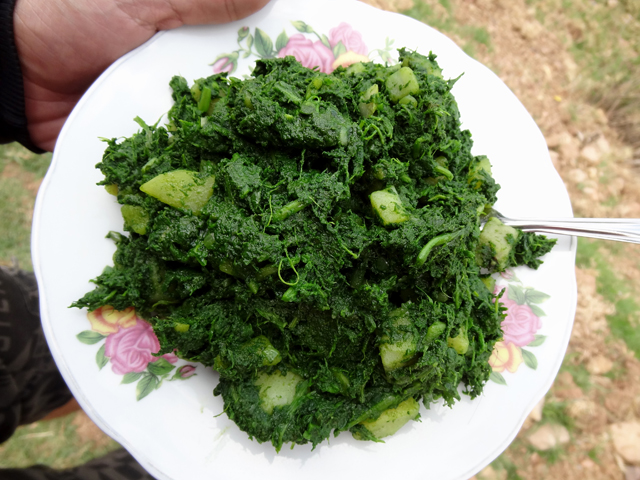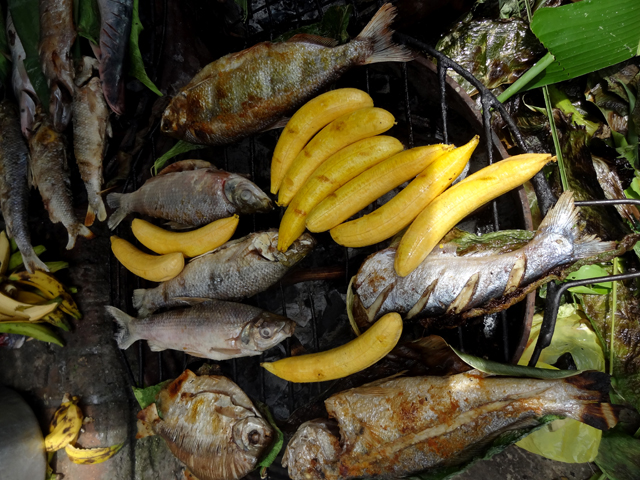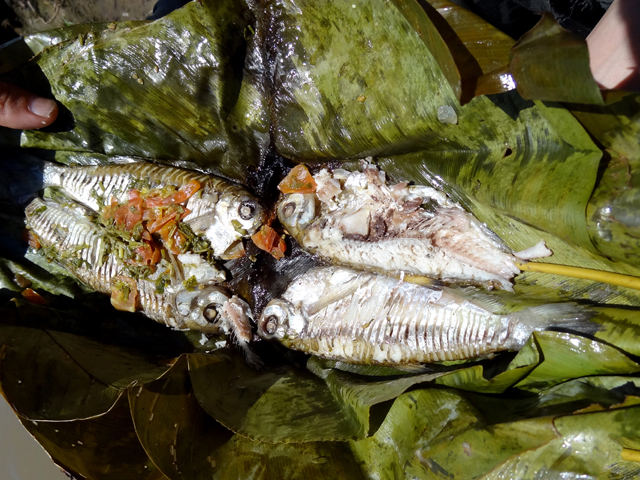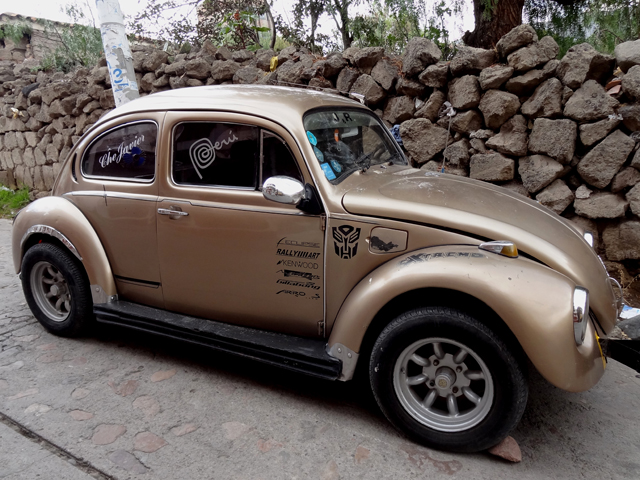Peru - Inca ruins, mountains, the Amazon jungle and foreigner discrimination
The White City of Arequipa:
Like I mentioned in the previous post, the first two weeks we spent in Peru were dedicated mostly to rehabilitating a puppy with a broken paw we found in Arequipa. During that time we made two short trips (to Cobanaconde and Puno) and the normal travelling routine started only after the puppy's paw healed and it was adopted by a wonderful Peruvian family. And here's the summary of the cities and natural, cultural and historical wonders we visited in Peru.
After crossing the Chile - Peru border and a brief (half-a-day) stop in the offshore city of Tacna we headed for Arequipa. Something that I should mention as an overall introduction to this post is that pretty much every single city in Peru has a very similar architectural layout, in the sense that its historic centre will always have a Plaza de Armas (the main square) where somewhere along its four sides you'll find the main cathedral and a couple of colonial mansions which these days house some governmental institutions and/or tourist information centres; a few blocks away from the square you will always find the central market; and the whole space within about 1-km radius from the square will be filled with colonial churches, monasteries and more ex-mansions. Arequipa was no exception to this layout, so the first day we spent exploring its historic centre (including the Plaza, Iglesia de la Compañia, the courtyard of Iglesia de Santo Domingo with its elaborately carved stone columns and the market). The only two things that are truly unique to Arequipa as compared to the other Peruvian cities are: (1) the perfect cone-shaped volcano El Misti which is visible from almost every point in the city so if you try hard enough it's possible to make it the beautiful blurred background of many of the city shots; and (2) the fact that all the buildings in the historic centre are built of very aesthetically pleasing whitewash-coloured volcanic stone. For the next two weeks however our walking was limited almost entirely to the area around the terminal where we were staying at Hospedaje Encuentros, a nearby busy market of domestic animals and food, and the medical neighbourhood with the vet. A couple of times when we briefly ventured into the centre of Arequipa again we visited the cosy park in front of the Santa Catalina Monastery full of cuddling couples and paid another visit to the market (to replace my broken shoes) and a cake shop (to buy Jordi's awesome birthday cake).
Views of El Misti and Arequipa:
Dozens of types of potatoes and grains - a well-maintained agricultural legacy of Incas:
Peruvian specialty - very peculiar herbal tea with jelly-like texture:
Colca Canyon:
Our first short trip from Arequipa (in between the vet appointments for the puppy) was to the village of Cobanaconde - the picturesque base for the 2-day Colca Canyon trek. We started this short adventure early in the morning with paying a visit to the Mirador Cruz del Condor - a famous condor watching spot where we expected to see dozens of condors posing beautifully right in front of our eyes but ended up seeing something like 5 birds at a distance mostly much farther than our camera with 16x zoom could handle. (I guess our expectations were too high because in Chile we had seen many more condors in various places flying much closer. And while the Colca Canyon provides a truly stunning background for watching the graceful gliding of these powerful birds, we think the place's fame as the condor watching spot is a little bit overrated. But then again it's definitely not the only example of how the unrivalled fame of some tourist spot rests entirely upon the fact that people who write guidebooks tend to specialize in a specific country so their conclusions as to the rarity or value of a specific experience are not cross-referenced with other countries in the world or at least in the same continent.)
On the bus to Cobanaconde - check out how this little girl is already practising carrying a baby using a piece of cloth (the Andean baby-strapping fashion):
"El condor pasa" ("The condor passes"):
Women selling souvenirs at Cruz del Condor:
After spending a couple of hours watching these magnificent birds soar against the blue sky and the brown canyon walls, we caught a bus back to Cobanaconde to start the actual trek. Despite the ridiculously high price (around 35 euro) for visiting the Colca Canyon area, there were zero maps and zero directions for the trek (which is the normal case for Peru), so it cost us a couple of hours to figure out exactly where to start it. One thing we´d like to mention at this point is that for people planning to visit Colca we´d advise not to pay this entry fee for a couple of reasons: first, the fee is charged by a couple of locals simply walking into the bus to Cobanaconde and filtering out foreigners by face which therefore classifies as foreigner discrimination (see our general remarks about Peru below); second, there's nothing in the area that was built or done for tourists using the lavish tourism money (not even a direction board for the beginning of the trail); and third, throughout the trek we felt that the entry fee wouldn't have been reinforced (we imagined there are quite some foreigners who refuse to pay for entry to a nature area which is not even a national park so we asked a guard at the Mirador Cruz del Condor who confirmed that had we refused to pay the fee to the two sweet women in Chivay, "nothing would have happened"). As I've mentioned there was not a single indication board to help us find the beggining of the trail and as we found out later there was no need to go all the way back to the village (a detour that cost us about an hour) as the beginning of the trek lies a couple of kilometres before Cobanaconde on the way from Cruz del Condor, at the place where a new stadium is currently being built (which seems to be the only investment carried out with the easy tourists' cash).
During the first day we trekked all the way down to the river first reaching the village of San Juan de Choccho, then asking a couple of small girls (the only people we met at that time) for directions to the next village Coshnirua, then following their vague "over there" gesture trying to find the way - an odyssey in which we were joined by father and son from the Czech Republic and which luckily turned out to be successful (despite complete guesswork at a couple of path's splittings and the fact that the route didn't match at all the primitive maps we printed from the internet). In Coshnirua we had a short break during which we played with a puppy and had a very 'serious conversation' with the puppy's owner - a little boy who told us all about the contamination of their water supply with the minerals from the nearby mine and how their dogs protect their sheep from foxes, all in a matter-of-fact tone of voice that made us think that he must have imitated as closely as possible the way his father shares these stories over a dinner with his buddies. After Coshnirua village it was time to walk down to our camping spot - the green oasis at the bottom of Colca which is 'watching' you like a huge green eye as you trek around the canyon. After about 20 minutes we passed the last village of the trek - Malata which had a really stunning rose garden in its tiny centre (consisting pretty much of a church and the roses) and then it was another couple of hours to the oasis where we arrived right on time to have a quick dip in the swimming pool of our "resort" (simple bungalows and a camping spot/football field) before a big guided group arrived and it grew too cold. The next morning we woke up after sunrise, dried and packed our tent, had breakfast and then took the steep zigzag path up to Cobanaconde village. In the next 45 minutes we reached the top (leaving behind the Colca canyon and quite a few guided groups that started the hike up before sunrise) right on time to catch the 9am bus back to Arequipa (and to the puppy).
Some view of the Colca Canyon:
Local women at the terminal of Chivay village:
Puno - Lake Titicaca, the Floating Islands and Taquile:
Our next round trip from Arequipa was to Puno - a vibrant town on the shore of Lake Titicaca and a base for exploring the nearby floating and stationary islands. We spent the first day exploring Puno itself: after spending some time finding a new hotel in the centre (we didn't like the one we settled for the previous night on our late arrival), we stopped at the market close to the "terminal terrestre" (the bus station) where Jordi got a huge dish of trout for something like two dollar. After that we walked around the centre which was full of school children in colourful costumes (getting ready for the next day's national festival) and then headed up to the Condor viewpoint where we could see the colourful streets of Puno stretched along the dazzling blue shore of Titicaca. And then on an impulse we tried to walk along the hill all the way to another part of the city (to see it from another angle) but on the way we discovered that there was no path, it was pretty steep and the grass was too rough for flipflops. And while all of this didn't stop us, an ancient tiny woman did :-). She appeared all of a sudden when we were stopped next to a herd of sheep and started running towards us with a stick, stealthily collecting stones along the way. We were trying to appease her with body language and some shouting to save her the long run, but she made it all the way to us, at which point we managed to win her trust with explanations as to what we were really trying to do (which was simply walking and not stealing her sheep) and with 50 cent which we gave her for coca after she asked for the actual leaves and explained that she leaved alone and didn't have money to buy it. By that time the impulse walk had already provided more excitement than we were hoping for, so we turned back to the viewpoint and down to the centre of Puno. We spent the remainder of the day first checking the prices and timetable for boat trips to the islands for the next day, and then wandering through a very big flee market that occupied a few blocks between the harbour and the centre and had a whole bunch of items like toys (that's where Jordi stopped), jumpsuits (that's where I stopped), clothes, shoes and bags (that's where the majority of the locals were stopping) and many more.
Puno from the Condor viewpoint:
At the market near the terminal:
At the flee market:
The whole day was all about the islands as we took a boat tour (the only option available) to first the Floating Islands (Islas de los Uros) and then the stationary Island of Taquile. The Floating Islands required a little bit of effort to appreciate, as we had to look through the purely touristy facade they turned into these days in order to see the fascinating cultural phenomenon they used to be. While these days local communities supposedly don't even live on the islands and come there to put up a show for tourists from the more comfortable Puno, we had a feeling that at least some of them (although maybe only the poorer ones) do live there and maintain and build the new islands the way their ancestors had been doing it for centuries. A floating island is made of totora - a plant that grows in abundance close to the shore of Titicaca. Its floating root base is sewn into platforms which are tied together by rope. This unique plant apart from providing the inhabitants with home is also edible and is rich in minerals (Jordi munched a whole stick of it during our island visit). The curious things we saw on these floating islands was the fact that they were using solar panels, had TV sets (albeit very tiny ones), and that some communities were really creative about what they could do with totora to make their island different from the neighbours, for instance, one would have a totora swing strung between the legs of a totora watchtower, another would have a watchtower built in shape of a typical boat from which the kids would fly their kites etc.
After the floating island our boat continued the voyage to the Island of Taquile which is very similar to the Bolivian Isla del Sol and is home to a very curious Taquileños community that has some truly striking culture elements, such as the fact that men pass their free time knitting (mostly their own hats), that their hats display their marital status (red corresponding to married and red-and-white to single), that the women wear traditional costumes that consist of bright-coloured skirts (of their preferred colour), a white blouse and a black shawl that depending on the angle makes them look like Muslim women. The tour through this island included a walk to the village where in the central square we found a big market with overpriced souvenirs and a huge poster saying "Unisex knitting - the knitting men of Taquile"), some knitting men and a lot of kids coming back from school and ready to pose for tourists' photos for a fee of one soles (about 30 cent). Since in the absolute majority of such commercial attitude to photos we figured out that a smile is also an accepted currency we used this latter one and dedicated the time that our group spent on an overpriced trout lunch to picture-taking and talking to the knitting men. After a short walk down to the boat during which we were following a woman who was spinning as she was walking down the stone stairs together with her little son for whom every stair required a jump, we arrived at the pier and boarded the boat together with many locals. During the return trip most of the present men from Taquile were knitting on the top deck, while the women were sleeping on the bottom deck using their huge black shawls as shield from the sun and the light.
The knitting men of Taquile told us that they start learning to knit at a very early age. Watching them knit made me realize that their knitting system is more efficient than the one I am familiar with, due to the way they wrap the yarn around their necks:
The view of the lower deck during our return trip to Puno:
Cuzco:
Our next stop was the legendary Cusco - a beautiful city full of historical sites and the closest city to Machu Picchu. After spending a couple of hours talking to Mr Serio ("Mr Serious") in our hotel who on top of the usual PR for the Machu Picchu tours offered by his agency insisted on sharing with us his entire stock of stories about the city history and its sights, we set off to explore the city's multiple churches, squares and ruins. After a quick trip to the Machu Picchu ticket office which sat us back by a hundred euro and a short stop at an Internet cafe to google about the Salkantay trek which we decided to do straight after the visit to Machu Picchu (therefore in reverse direction), we spent the rest of the day around the colourful centre of Cusco. The route for that day (this list is purely for our record-keeping purposes :-) included: (1) the busy San Pedro market and a few blocks around it lined up with food stalls, selling women in traditional clothes and hats and crowds of shopping locals; (2) the unfailing Plaza de Armas; (3) quite a few churches (the main Cathedral, Compañia de Jesus, La Merced, San Francisco, Santa Teresa, Santa Clara, San Pedro - there are indeed almost as many churches in Cusco as in Kiev); (4) a walk to a remote bus station to purchase tickets for the next day's bus to Santa Teresa (the first stopover in the independent itinerary to Machu Picchu which is a much cheaper alternative to super-expensive tours or the overpriced train that bears the proud name "Peruvian Rail" but in reality is run by a Chilean company which privatized it a few years before; (5) and a walk through my favourite part of Cusco - a few blocks around the centre full of narrow streets of ancient adobe houses (in many cases - quite in dire state), the bottom part of which is made of giant rocks (the so-called Inca walls).
Just some of the heads and hoofs you can see at the San Pedro market:
Many Peruvian kids grow up in the market, as they spend there the whole day while their mums are selling homegrown vegetables or other produce. Below are just some of the photos of these kids. Check out the little boy with a tomato in his hand - as his mum was selling he was entertaining himself by throwing her vegetables over the curb :-):
Machu Picchu:
We spent the whole next day getting to the tourist city of Machu Picchu, or Aguas Calientes. And while the absolute majority of the hundreds of people who visit Machu Picchu every day get there with some kind of agency package (mostly a direct train which costs something like 90 euro for a 3-hours trip), we took a much longer but much cheaper route: Cusco - Santa Teresa (by bus, 5 hours, 15 soles each) - Santa Maria (by so-called collective taxi, 1 hour, 15 soles each) - Hidro-Electrica (by minivan, 15 minutes, 5 soles each) - Aguas Calientes (on foot, 2 hours, gratis), a total of about 12 hours, 10 euro. We arrived at the village right before the dark, had a quick walk to the centre and a dinner at the market and went to bed early to be fresh for the sunrise hike to the site of Machu Picchu.
We left the hotel at about 5am the next morning and during the 45 minutes walk up to the site, had to continuously overtake all the multiple groups which we heard start this "major hiking challenge" at about 4am. We ended up arriving to the gate second only to a small group of young British guys who were engaged in heavy bragging about the speed of their ascent :-). Within the next few minutes the small area in front of the gate grew crowded with tourists who were all forming a natural queue (with the exception of an ill-mannered American lady who insisted on putting herself at the front claiming that she'd seen other people doing it so I had to ask her to get back in line to the delight and supportive comments of the British guys). At 6am we were all admitted to Machu Picchu and very soon had our first - unforgettable - sight of it. A few things we learnt that day about this ancient Inca city (by eavesdropping at various guided groups and listening to the guides that had the most interesting stories): the cleaning up of this historical wonder was carried out with the financial support of the National Geographic; the city had a clear structure with two distinct part - urban and agricultural; the picturesque green platforms which give the site such a photogenic look were designed to have unique micro-climates suitable for cultivating specific crops; Inca people had advanced knowledge of astrology and agriculture (including selectionism); they bred quite a few plant species including the famous huge Peruvian corn; and - that's our favourite part - they were vegetarian and ate meat only a couple of times a year!
We spent almost the entire day walking around the different parts of this vast site: in the morning using the advantage of gentle light we first took a dozen photos from various platforms and viewpoints; then we had a quick hike to Intipunku - the ruins of the so-called Sun Gate, where we found a huge group of tourists in their final stage of the very popular Inca Trail (which costs 600 USD and takes you through just one of the trails in the mountains which Incas used as trade routes), all of them very delighted that "they made it" while donkeys were carrying their stuff, porters were setting up and dismantling their tents and all they had to do was walk very slowly a few kilometres every day :-); then we came back to the site and had our first "guided tour" around the site by temporarily joining a group that had an interesting guide; then it was time to start the hike up to the summit of mountain Machu Picchu to the south of the city (literally, "Old Mountain", while Huayna Picchu to the north is "Young Mountain"); after a 45-minutes hike up we quickly took a few much more panoramic photos and were forced to walk down as by that time we ran out of water (the insufficient amount of which was caused by our blind trust in the guidebook that said that water and food were not allowed on the site - which was not true, since nobody ever checked or asked); then we had another photo-taking session from the viewpoints; and another walk through the site - this time by ourselves, to slowly and peacefully savour its beauty once again. At about 4pm we started the descent to Aguas Calientes and in about half an hour arrived back at the village where we had a whole afternoon to rest before starting the Salkantay trek the next day.
The walk to Aguas Calientes:
Machu Picchu:
The views from the Machu Picchu mountain:
The next day we started the 3-day Salkantay trek - more about this trek in the dedicated post "Peru - Salkantay and Santa Cruz treks"
Salineras and Moray terraces:
Our next sightseeing trip from Cuaco was to visit the famous Salineras (salt terraces) and the amphitheatre-like Inca agricultural terraces of Moray. To get to Salineras we took a minivan to Tarabamba (10-minutes drive from Urubamba) from a station in Cusco and from there hiked for about 20 minutes till we saw the white belt of the salt terraces on the slope of the red mountain in front of us. In the beginning we took an alternative path on the opposite slope to try to get the best view of the salt terraces but had to give up as the tiny path eventually disappeared and we found ourselves wandering on a really steep and slippery slope. We then walked the normal road to see the salineras at a closer view and were amazed at the photogenic effect created by a layer of salt crystals on the burgundy soil of the terraces. After the salt terraces we made a quick detour to see 'some caves' which two local women told us about and which turned out to be a couple of tiny adobe constructions stuck into the cave-like mountain slope, one of them being a charming pink church that seemed to be holding the slope precariously hanging over it. From Salineras we caught a minivan back to Urubamba and from there another one to the crossing for the village of Maras. At the crossing we checked the taxi rates for a round trip to Moray (taxi being the only available transportation option) and because of how hesitant we were as to whether to go or not got a much better than the standard price we'd read in the guide and that was originally quoted by the driver. Unlike Salineras which are actually used as a salt production site, the Moray terraces once used by Incas as belts of unique micloclimates for agricultural experiments these days are exploited purely as a tourist attraction, but just like Salineras, the Moray terraces are very photogenic. By the end of the day, with our camera's memory card loaded with a few dozen more photos, catching an empty tourist agency minivan we headed back for Cusco.
Salineras:
Trip to the caves:
Moray agricultural Inca terraces:
Back in Cusco:
We spent our last day in Cusco checking the sights we hadn't had the time for before, like a curious Irq'i Wachay museum that was supposed to house a collection of paintings by kids from remote communities but turned out to be moved to a different location and once we found the new address - temporarily out of service. After a long search for the non-functional museum we headed up to San Cristobal church for a view of the whole city and from there attempted a walk past the ruin complex of Sacsaywaman but were stopped at the second entry to the site by guards who claimed that the road we were following belonged to the park (although there was no barrier gate and cars and taxies were driving by without any checks). After a lengthy argument about the absence of legal base of such claims, we gave up and headed back to San Cristobal from where we took a small path up to the Cristo Blanco viewpoint. As always, the course of least resistance bore the best results as after checking the views we took another path down and ended up inside the Sacsaywaman park! Not to abuse our luck, we quickly took some photos of the Inca walls within sight and then headed for the exit, leaving through one of the three official gates (so much for the controls, private roads and similar restrictions). We spent the last couple of hours in the city walking the cosy streets of the central Cusco and finally checking the famous 12-sided stone in one of the Inca walls. By then it was time to head for the station to catch our night bus to Andahuaylas - a transit point on the way to the city of Ayacucho.
The 12-sided stone in a neat jigsaw puzzle-like Inca wall:
Ayacucho:
After a night ride to Andahuaylas and a day-long bone-rattling journey on an ancient bus without suspension on a horrible mountain road that got closed for repair works for a couple of hours (so we had to pass the time together with the rest of passengers - all locals - eating tiny fibery but very sweet mangoes and engaging in similar activities of bored human beings), we finally arrived in Ayacucho late at night, took a hotel right next to the terminal and went to bed. A couple of decades ago Ayacucho due to its remote and cut-off location became the nurturing ground of a very violent pro-Maoist terrorist group known as the "Shiny Path" (this wouldn't be the first case of such an utopian title smeared with a lot of blood into something totally opposite). But although remote it still was planned like a typical Peruvian city, so our sightseeing agenda for it was pretty similar to all the other cities we'd travelled by then. We started by taking a bus to the centre and stepping out close to the Plaza de Armas (with the usual Cathedral and colonial mansions). We then walked to the central market where we bought a very tasty local specialty - homemade chocolate.
A Peruvian dog - the dog version of the Sphynx cat:
Local girls - the little one had a piglet for a pet:
After that we walked to Ayacucho's main tourist attraction - Museo de la Memoria, or "The Museum of Remembering" which houses a small collection of photos, pieces contributed by local artists and thorough explanation boards regarding the foundation, the violent actions of the activists of the Sendero Luminoso (Shiny Path), the consequent military response of the State, the messy unscrupulous way it was carried out (with many innocent people killed as terrorists) - in short, the whole terrifying story up till the day that the founder of the Sendero Luminoso Abimael Guzman was captured and arrested in Lima. The visit to the museum included a quick guided tour - ours was conducted by a lady whose husband was killed by the terrorists and who was one of the women who founded the museum with the financial aid of several foreign institutions. In a very touching way and simple words she told us how during the conflict the locals were caught up between the terrorists and the military forces; how both the army and the terrorists were brutally executing, torturing and raping people - the former on suspicion of cooperation with the terrorists and the latter - with the government; how there was so much cruelty on both sides that even kids were not spared and how the most extreme cruelty came from women who lost children or husbands to either of the sides. She explained the origin and meaning of every single exhibit in the museum, in such a way that you could see that most local people like her probably never shared or even understood the ideological demands of the terrorists and were simple victims of the whole messy bloodshed. The Museum of Remembering has even a more meaningful mission in the light of the fact that the Sendero Luminoso is currently still quite active in Peru and there's a risk of history repeating itself. In one of the local newspapers we read there was an article about an organization that looks very much like a younger sibling of the Sendero Luminoso and which is currently carrying out brainwashing work in the remote areas of Peru, in pretty much the same way the Sendero Luminoso was doing it before Guzman's arrest. The biggest danger comes from the fact that these days the ex-terrorists made a lot of money by engaging in the narco-traffic and consequently have quite a lot of capital to invest into acquiring followers (which they do by buying their farming produce at prices much higher than anybody else can pay)... Unfortunately, it's hard to say just how much Peruvian people remember of this bloody past, as during that day we were the only visitors at the Museum of Remembering, and judging by the registration book there are hardly any locals among its visitors.
We spent the rest of our day in Ayacucho at the Cerro Acuchimay viewpoint, first sampling a local specialty - cuy chactado, or fried guinea-pig (this one mostly by Jordi) and then watching (with some jealousy) a whole class of primary-school kids flying kites made by their young teachers.
A Peruvian food speciality - fried guinea-pig (cuy chactado):
Kids flying kites at the Cerro Acuchimay viewpoint:
Fiesta Señor de Maynay:
We spent the next day sampling a lot of foods, treats and fruits at the annual fair Fiesta Señor de Maynay, close to Huanta city and an hour drive from Ayacucho. It was one of those lucky cases when the timing of our visit to Ayacucho coincided with a popular local festival. The fair's main focus being agriculture and farming, on a yearly basis its participants exhibit and sell their best produce, where "best" in most cases was equivalent to "the biggest": giant cows (one so tall we could hardly believe our eyes), pigs, sheep, guinea pigs, chickens and other animals; giant avocados, pineapples, long rows of various types of corn, beans, potatoes etc. And while the multiple tents with all these animals, vegetables and fruits were attracting visitors, the real reason for most of the locals to spend a weekend day at the fair was to eat all sorts of local specialties - the food stalls occupied most of the fair premises and served dishes like roasted piglets, cuy, chicken, chicharron (pork fried in a lot of oil) etc. Our personal pick was the beetroot-coloured "papa picante" ("spicy potato" the peanut sauce of which reminded us very much of the Indonesian gado-gado) and an exquisite desert from whipped sugar-cane juice. Another special treat of the fair was "watia de calabaza" - pumpkin buried and naturally baked in the ground with ashes - which the locals dug out right in front of our eyes following some kind of symbolic ceremony in which all the present people took turns in digging (they even offered us to have a go). After that the pumpkin flesh was cut into pieces and served for 1 soles per portion to all who wished to try what they called "comida de los Incas" (the food of the Incas).
Digging out "watia de calabaza" - a pumpkin dish prepared according to an ancient Inca 'recipe':
Children just wouldn't leave the side of this guy begging him for a bright green balloon and although we couldn't see the face of the guy beneath the costume we could tell by his body-language that he was definitely annoyed :-):
Locals watching a performance of street stand-up comedians - for us watching the faces and reactions of these people was much more interesting than watching the comedians whose sense of humour didn't exactly appeal to us :-):
Lima:
After an overnight bus from Ayacucho (getting out was much faster than getting there) we finally arrived in the capital of Peru, Lima. Quite prepared by the warnings of the guidebook, we didn't get very surprised by the cloudy look and chilly feel of the city: LP has a whole paragraph dedicated to the dull alabaster skies of Lima in winter (and how the Spanish chose that spot for their new capital only because they arrived in summer when it's always dazzling blue). Because of the night buses we tend to arrive in the cities very early in the morning, so most of our first walks take us through the usual sightseeing route but via empty silent streets and with a different focus - finding a hotel. Finding one in Lima was a real challenge as the absolute majority of tourists travelling Peru take a taxi from the airport to a well-off and very touristy neighbourhood of Miraflores which has plenty of hotels (all of them above our budget). The central Lima has some budget options but they are all very dispersed, so to find a hotel you need to walk blocks and blocks. We ended up wandering through the centre for quite a while and asking a lot of people where we could find a cheap hotel - they were all sending us a few blocks away where we'd walk only to have to ask again as we wouldn't find any hotel. After some time we reached a traditional Chinese gate and started seeing a lot of Chinese restaurants, banks, shops etc. - all with name boards in Chinese characters - and that's how we knew we were in Chinatown. We asked for a hotel again and following the directions, arrived at Plaza Italia - a colourful little square - where we were supposed to find the hotel. As always, we didn't see any, so we asked again and - Hallelujah! - people sent us to a building that looked like an old shabby house on the outside (it didn't even have a board), but on the inside turned out to be an amazingly clean, comfortable, Chinese-owned hotel with spacious rooms that have cable TV and private bathrooms - and remarkably within our budget (about 10 euro).
It was Sunday so we ended up starting our real sightseeing tour by unintentionally attending a service at the Basilica de San Pedro very close to Plaza de Armas and witnessing a strike by Peruvian medical workers right in the church yard after the service (the priest's appeal to move out of the church premises didn't have any effect on the participants as they kept on reciting their slogan rhymes as the priest walked away, the Bible in hand). Then just as unintentionally we visited Museo del Banco de la Reserva del Peru located in the former building of the Reserve Bank which has a great collection of art from various pre-Inca civilizations, arranged according to the timeline (which is a cool way to learn them); paintings from various periods of evolution of the Peruvian art (with decent explanations of their characteristic features and origin); and coins from various historic periods (as you might have guessed, presented also in a very structured way with proper explanations). After the museum we headed to the Plaza de Armas, right in time to unintentionally catch a very pompous guard-changing ceremony in front of the Presidential Palace. This was a very curious cavalry show, with the whole brass band playing music from horseback and horses adorned with beautiful red saddles and yellow socks, their manes plaited with red-and-white ribbons (Peruvian flag colours) performing their best tricks. The well-trained star of the show was even performing cute little dances according to its masters choreography in front of the cheering crowds. The only thing that was spoiling the view was the continuous walking of spectators in and out of the improvised sitting area which had restricted access - exclusively for people with kids and VIPs. So half the kids got bored throughout the performance, the other half needed to pee, and many arrived late, which meant that most of the time people were walking in and out accompanied by guards, who were all exploding with the feeling of their own importance. After a while of all this dancing, the President himself appeared on the porch of the Palace and watched it together with the rest of mere mortals till its end. Once this performance was over we changed our position to the stairs of the Cathedral and that's where we caught another procession - this time a religious one, with a lot of men carrying an image of some saint accompanied by many nuns in the front and many followers in the back.
After that we went back to the area around our hotel and that's when we discovered what we nicknamed as "the puppy street" - a whole street full of pet shops where they sell a lot of puppies of different breeds for ridiculously low prices. Checking out pretty much every single puppy in the market, we left. During the second half of the day we visited another exhibition - Gernika which while it didn't have the famous painting by Picasso (a world-renowned symbol of civilian suffering resulting from conflict), had interesting explanation boards of this atrocious bombing of the Basque city during the Spanish Civil War carried out by the Nazi's on Franco's request. The aerial attack on Gernika - a strategic point for the Republican forces opposing the Nationalist junta led by Franco - was an example of terror bombing (in which civilians are deliberately targeted in order to break their will) and had widely controversial reports on the reasons and victims count almost up till the present days when the German government finally offered an official apology.
After attending this exhibition we were right on time to unintentionally catch a part of the evening service in Iglesia de La Merced (this time attracted by the incredibly beautiful singing). After that we took a long bus trip to check out the so-called Circuito Magico del Agua which was sold to us by the guidebook as an incredible show that could rival those of Las Vegas but turned out to be an overpriced and purely touristy lights-and-fountains place which according to what we saw through a symbolic fence was too normal to pay the high entry fee.
And then it was Monday so time for a usual visit to a consulate (our stays in capitals always include at least one of those). This time we tried to apply for my Colombian visa but because the Colombian Consul in Lima wasn't particularly forthcoming in how he handled our peculiar situation (as we tried to supply a genuine letter instead of some of the required documents), we decided to try at another consulate some time later. Meanwhile most of our thoughts and time were filled with researching a specific subject that had been on our minds for a while and which we'll write about in subsequent posts once we see how it all goes...
On the last day in Lima before leaving for the city of Huaraz, we spent the day paying a quick (and failed) visit to MALI (the Museum of Art of Lima) where almost all the halls were closed for restoration work, and checking some historic churches. In the Church of Santo Domingo we checked out the famous skulls of three Peruvian saints that are exhibited in a glass stand close to the main altar. In the striking San Francisco Monastery we had a guided tour during which we visited several rooms, like the meeting room with neat rows of carved chairs that made me think of the British Parliament and a manual organ that had to be powered by a monk running on a belt); the library with thousands of ancient books; and the most impressive part - the catacombs - where the Franciscan monks used to bury people and fellow brothers but which in modern times were turned into a fancy display of pretty skull arrangements, with most skulls and bones arranged in concentric circles as a kind of weird reminder of how we all are just "dust in the wind"... The curious fact about these catacombs is that there was only one place that escaped the unburial - the graves of the most prominent Franciscan monks.
A panoramic view of Plaza de Armas:
The guard-changing procession at the Presidential Palace:
Some religious procession:
This dancing band from "the jungle" was attracting a lot of attention (and contributions) from passers-by:
My favourite building in central Lima:
Huaraz:
The next morning we arrived in the city of Huaraz which is no exception in its city planning to the usual Peruvian architectural layout (Plaza de Armas, churches etc.) except for one striking feature - from the city's main square you can see a lot of stunning snowcapped peaks of the surrounding ridges of the Cordillera Blanca. These ridges were actually our main reason to visit the city, so after a quick tour around the city centre we dedicated the rest of the day to researching the possibility to independently do the popular Santa Cruz trek. More about this trek in the dedicated post "Peru - Salkantay and Santa Cruz treks".
Iquitos - Colombian visa and the Belen Market:
Our next and last adventure in Peru was a trip to the Amazon jungle. From Huaraz we took a really long trip to Iquitos - a former centre of rubber production which used to be very rich before seeds of the rubber tree were shamelessly smuggled to Malaysia where costs of rubber collection from orderly plantations were much lower than from the wild rubber trees of the Peruvian jungle. Our stay in Iquitos was longer than we'd originally planned for the usual silly reason - my visa application. And while we did succeed in obtaining my Colombian visa (after a failed attempt in Lima), it cost us a whole weekend of waiting and 95 dollar. The reason for the waiting was some peculiarity of the consulate's financial reporting which made them want to be paid in the same month as the visa would be issued (so Monday being October 1st that's when they wanted us to apply) and the reason for such a high fee being the fact that 50 dollar is charged for the "visa study" and another 45 - for the actual pretty sticker. In the application process all my documents (which this time included an outward flight reservation - there's no need to mention its origin) were thoroughly studied both by the Consul and his assistant, we had to go to the bank twice to pay the separate fees, I had to take a new passport photo because the one we'd originally supplied did not have the white background listed in the visa requirements, and we spent a couple of hours chatting with the Consul who turned out to be a very interesting person whose real profession and passion was systems engineering to which he dedicated his entire career prior to obtaining this prestigious diplomatic post - so all in all quite a long and laborious application process (luckily with a positive result).
We used the weekend to work on the recent posts and visit the picturesque market of Belen (20 minutes ride by motorcycle rickshaw from the centre of Iquitos). And while we had this image of Belen being the Amazon version of the floating markets of Thailand, it turned out to be completely dry (just like the rest of the jungle at the time of our visit), so instead of hiring a canoe we could actually walk through rows and rows of food stalls and the adjoining streets of stilt houses, where a lot of friendly locals (and especially kids) were greeting us from their houses. And while all the water villages around the world do have a similar look (Belen reminded us very much of such villages in Brunei and Malaysia), Belen had some unique features, like curious public toilets placed in the middle of wooden bridges with holes in their base to dispose of "waste" directly into the river below, colourful graffiti paintings on the walls of many houses and flocks of vultures flying over the rubbish-filled channels and solemnly sitting on the wooden poles drying their wings in the sun (which we heard is a natural way for them to kill the worm eggs stuck in the feathers). And then on Monday we finally got my Colombian visa, so on Tuesday it was time to leave for our next and last Peruvian adventure - the Amazon jungle trip.
The tiled buildings of Iquitos are vestige of its former richness, as at the time of its rubber-powered wealth house-owners could afford to import expensive tiles from Europe:
Local buses in Iquitos have wooden window frames which gives them their very peculiar look:
People who live in the Peruvian jungle have a distinctly different look and psyche from the proud inhabitants of the Peruvian Andes:
Belen market:
A public toilet on a wooden bridge is a common sight at Belen:
Women rolling the very aromatic local cigarettes:
A heart-breaking sight of rare animals (like this tortoise) being caged or butchered as source of meat, while illegal is strongly rooted in the local culture and because of that is unlikely to disappear any time soon:
Back in Lima:
After our jungle adventure we spent another day in Iquitos and then took a flight to Lima where we spent another 4 days before finally leaving Peru for Ecuador. Having spent so much time in Lima, we grew to know the people from our hotel: the women in the reception, the guy from the parking lot with his three cute boxers, the owners (two brothers and a sister) whose parents came from China. On our last day at the hotel we were finally able to confirm our original guess as to how the hotel was able to stay in business without as much as a name board: as we were sitting at the reception we heard a group of Chinese guys trying to discuss the room rates with the reception girl. As it turned out, the Chinese owner's brother who was around at that time only spoke a tiny bit of Cantonese (their parents had settled in Peru long time ago) and the reception girl didn't speak any Mandarin either. We jumped at an opportunity to make some use of our Chinese, so we offered our translation services to the girl. After 10 minutes of agitated talking, the Chinese sailors (as that's what they turned out to be) all had a room, learnt that they couldn't stay together, knew the price of a girl (the first thing they inquired about after the room rate), learnt that they didn't have any discount for the "whole afternoon", that they couldn't share the girl, and that they didn't have any flipflops provided in the room (which is a norm in China). And we learnt that the business model of the hotel must rest entirely on word-of-mouth promotion so that's why their customers don't need a name board to find them.
Our last sightseeing visit in Peru was to Chan Chan - the ancient adobe ruins of a pre-Inca Chimor civilization - located in the coastal city of Trujillo which we transited through on our way to Mancora, Peruvian famous beach spot where we stopped for a day to check out the surfing break and spend a day at the beach.
Lima:
Plaza Italia:
At a street market:
On the left - 3 cute boxers in the parking lot right below our hotel; on the right - a man reading the Bible at a Sunday Christian discourse initiated by amateur religious leaders at Plaza de San Francisco:
Chan Chan:
Mancora:
A stick insect we 'met' on our way to the Peru-Ecuador border:
A few general observations about Peru
Things related to travelling:
- "Gringo" mentality still having a strong hold over Peruvian minds, a foreigner is definitely an outsider who must speak English as the native language. Examples of this mentality included locals praising Jordi for his fluent Spanish (despite the fact that it's one of his two native languages :-).
- And while locals assuming that you don't speak Spanish doesn't do you any harm, there are parts of Peruvian travelling reality which can be really frustrating because of this 'gringo mentality'. One such area is the pricing policy for entry tickets to tourist spots like historic ruins, national parks etc. Foreigners being perceived as money bags by Peruvian tourism managing authorities, the prices are very high compared to most countries we've travelled and are usually charged exclusively to foreigners who are filtered from the crowd based solely on face control, which if carried out by some rude guard will make you feel very much like an object of discrimination. And while the fees are high, the basic infrastructure (like maps, directions boards and the like) is pretty much nonexistent, leaving you as a traveller who just paid a whole load of cash to some greedy local community or a state organization, wondering whether any of your money at all is used for any purposes other than enriching a couple of corrupted local officials. Here are some examples of ticket prices in Peru: Colca Canyon - 35 euro, Boleto Turistico in Cusco - 70 euro, Machu Picchu - 45 euro, train to Machu Picchu - (we heard) about 90 euro (depending on the class), Santa Cruz National Park - 30 euro. With hundreds of daily visitors in Machu Picchu and dozens - in the rest of the popular tourist destinations you'd imagine the local communities would grow more prosperous every year and you'd see some investments into improving the infrastructure for accessing and enjoying those places, but the only thing we saw were the usual poor villages which do not look like there's any money invested into their development, and some stadiums and playgrounds in/around touristy places which are always empty and/or locked.
- Basic expenses for travelling the country are pretty low (almost like in Asia). Transport: while many of the buses are a rattling nightmare with ancient suspension, they are pretty cheap (around 10 dollar for 8-10 hours ride). Food: a menu (soup + main dish) costs around 2 dollar. The nation loves Chifa - Chinese restaurants with fried rice as the star of the menu, but while those are actually run by Chinese (or their descendents), this food has nothing to do with the Chinese cuisine and we used this chain only as a last resort (since they are open till late and tend to monopolize the area around the terminals). Accommodation: a double room in an "hospedaje" (guesthouse) is about 10 dollar, and just like in Bolivia, we preferred the ones around the terminal which tend to have the same price as in the centre for higher value since they are usually much newer, plus it saves us two long journeys with heavy bags from and to the terminal. As you might have noticed, in Peru food, accommodation and transport make the perfectly equal parts in your daily travel budget (which is also true for most of the countries we've travelled).
Other curious things about Peru:
- The old VW Beetle seems to be the locals' favourite car - whatever city you go, you'll always see many of those, in all sorts of colours and driven by all sorts of owners.
-- While we are pretty sure locals have never heard the actual term "outsourcing" they've probably been doing it long before the western society figured out the advantages of this powerful business concept. The best place to observe outsourcing a-la Peru would be a local market where you can see many people engaged in peeling, cleaning and otherwise preprocessing something that other market vendors need, with potato peeling being the most commonly outsourced service :-).
- Ever since we started travelling Latin America I've wanted to write an ode to the Chinese plastic woven bag. A genius who invented this bag by figuring out that a way to stop plastic from breaking was to simply weave it like ordinary cloth, definitely deserves a monument in every Peruvian city, somewhere next to the usual marble statue of Simon Bolivar. Without those super-enduring bags, which come in all colours and sizes, the Peruvian logistics services and markets would simply collapse, leaving this society paralysed in the same way it would happen were some western society lose power or internet connection for a long while.
- Human laziness as foundation of foreigner discrimination: in line with my prior comments regarding the gringo mentality in Peru and how it's exploited by local communities in the most shameless manner, I'd like to dedicate another ode to human laziness without which foreigner discrimination would never be possible. If you think about it, if the absolute majority of foreigners that travel the world would not be so lazy as to always go for the purely touristy ways to get to and experience places (taxis/tours), independent travellers would have a chance of being treated as human beings rather than money bags. But since the absolute majority of foreigners coming to visit countries like Peru can't or don't want to make an effort of independent travel, independent travellers hardly stand a chance of breaking through the locals' mental patterns regarding foreigners. This, from our point of view, effectively lays the foundation of foreigner price discrimination. If we look at the modern cultures around the world, this foreigner discrimination is definitely one of the few modern forms of discrimination savoured by modern societies. It manifests itself in unfair foreigner prices (charged both by common people and their governments) and in restrictive visa regimes which sometimes makes it impossible (or very difficult) for citizens of some countries to visit a specific place on Earth. It's a real shame that the human societies seem to be pathologically incapable of surviving without any form of discrimination throughout any stage of their evolution. It wasn't like this just a couple of hundred years ago, and as independent rtw travellers we hope it won't be like this at some point in the future. That's why "Imagine there's no countries" is one of my favourite lines...



